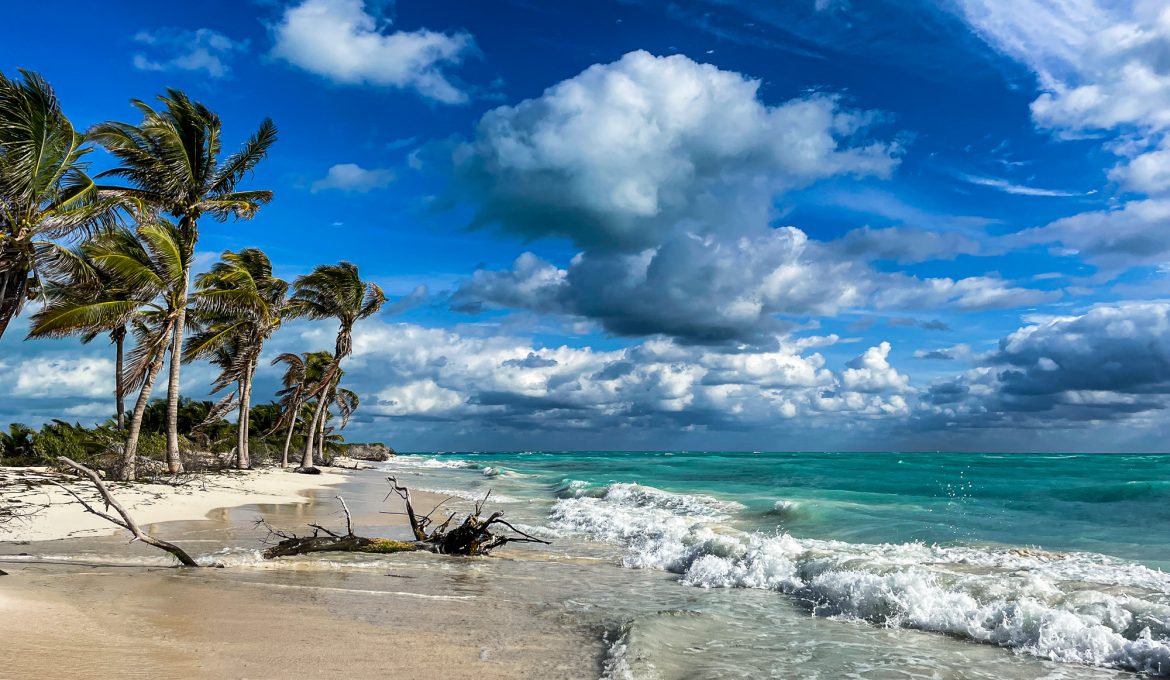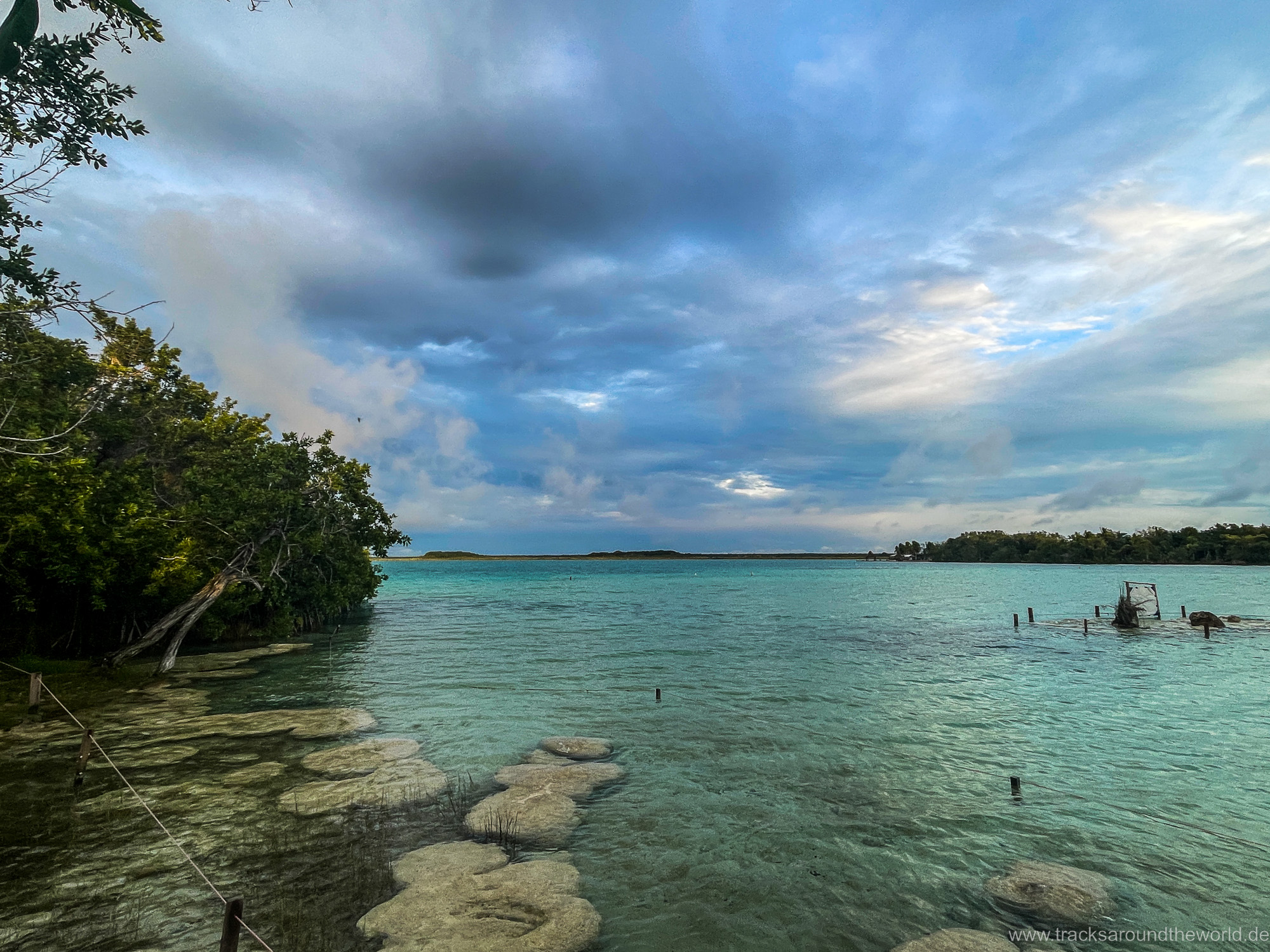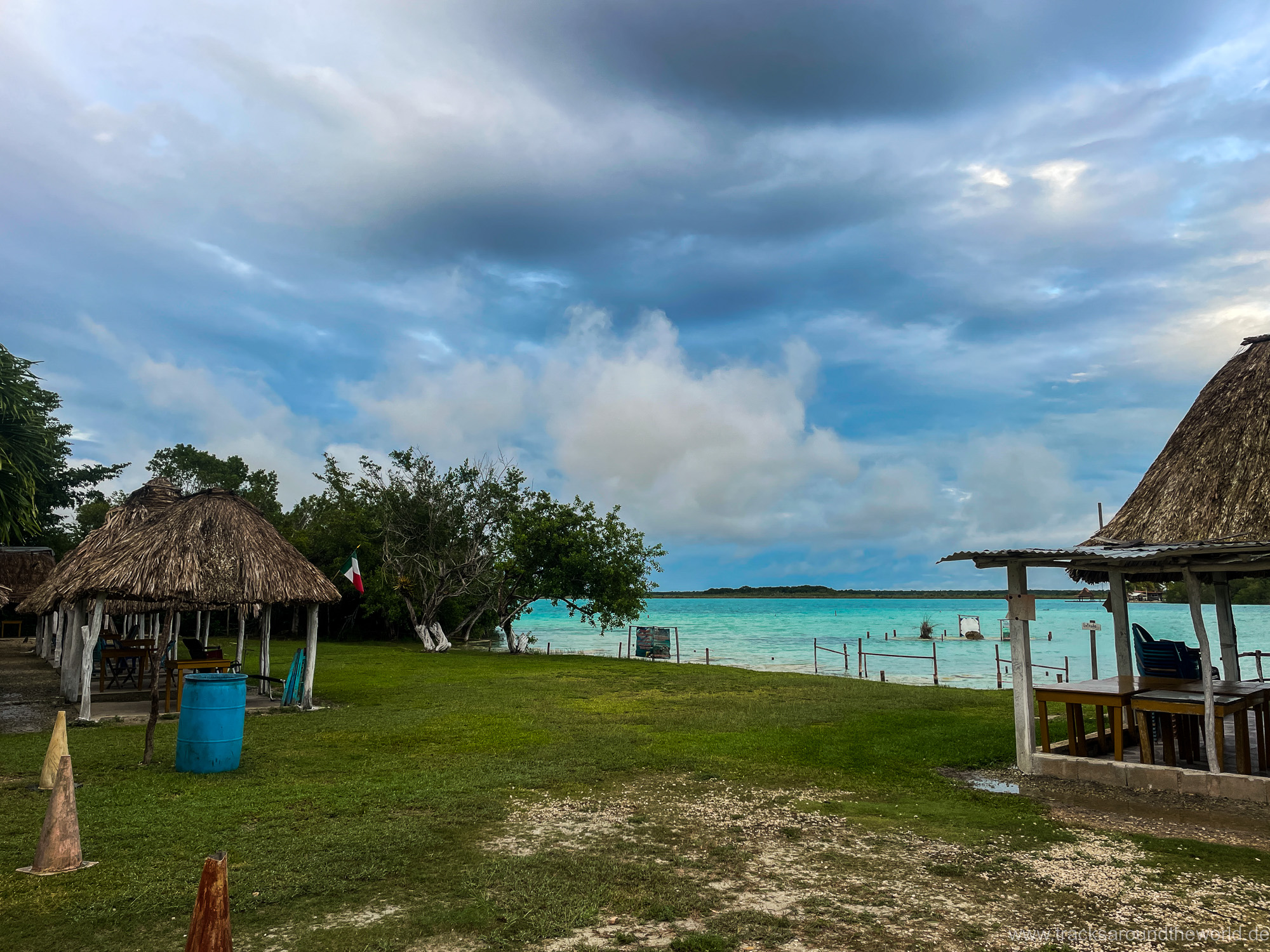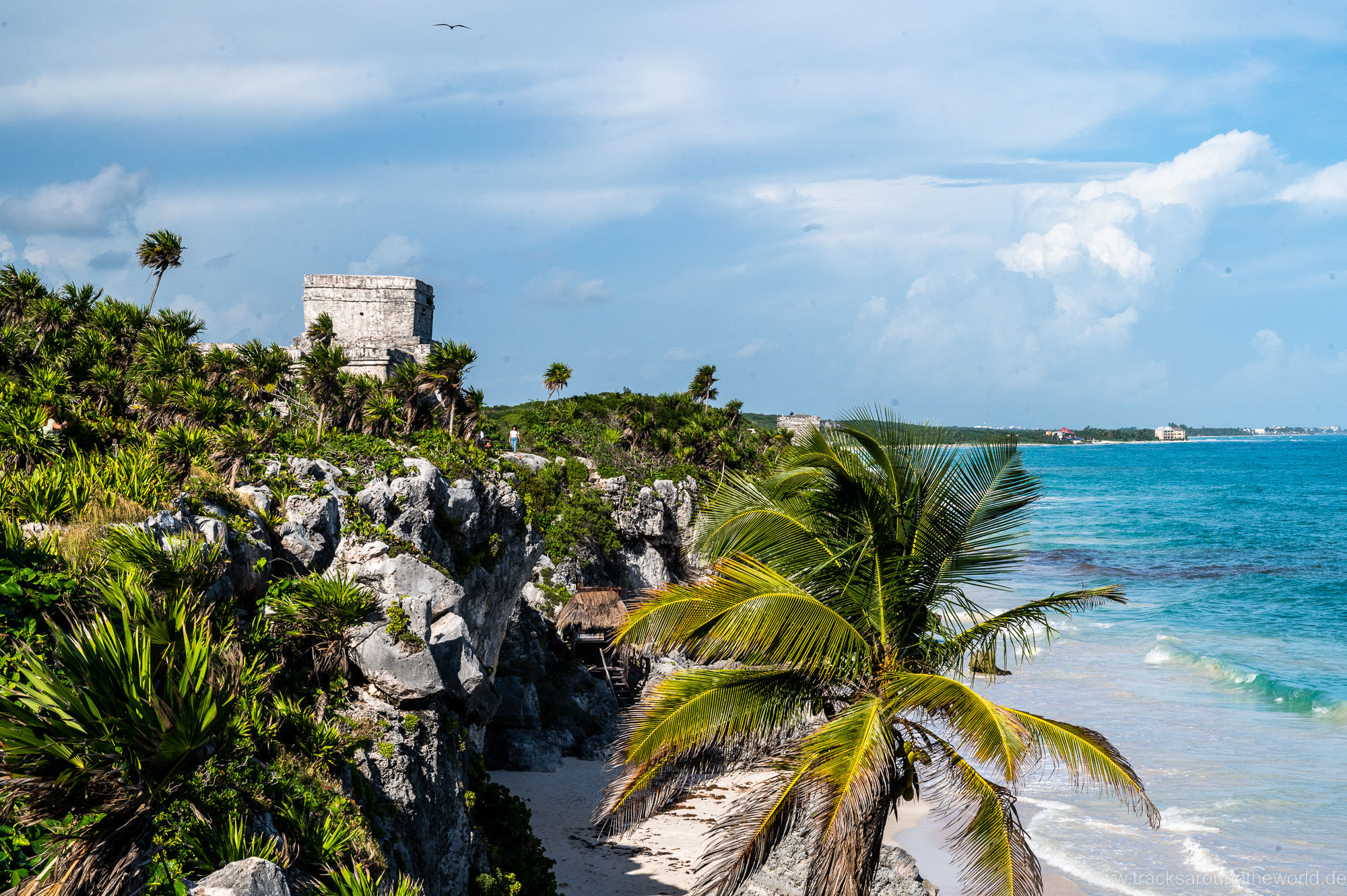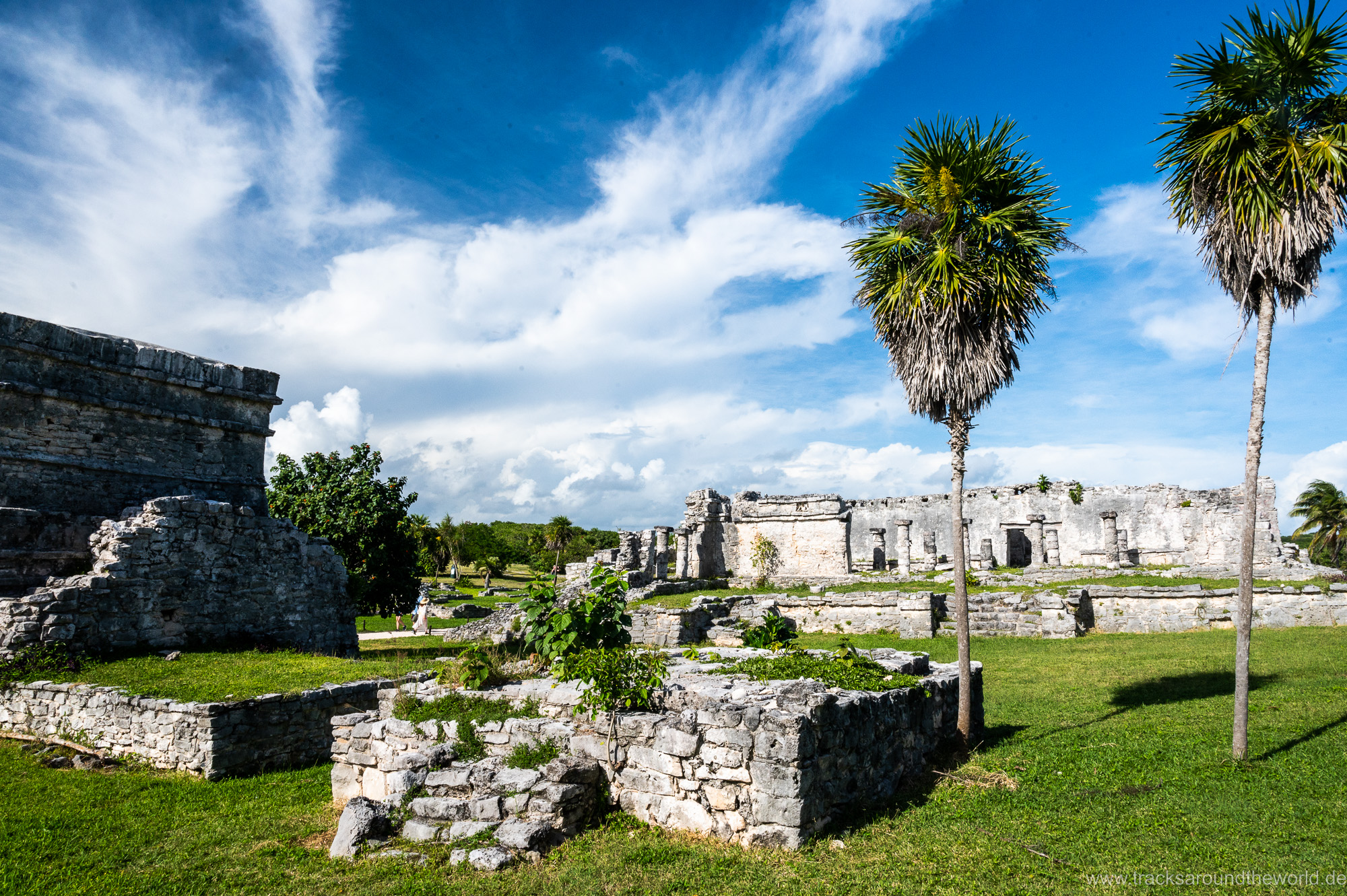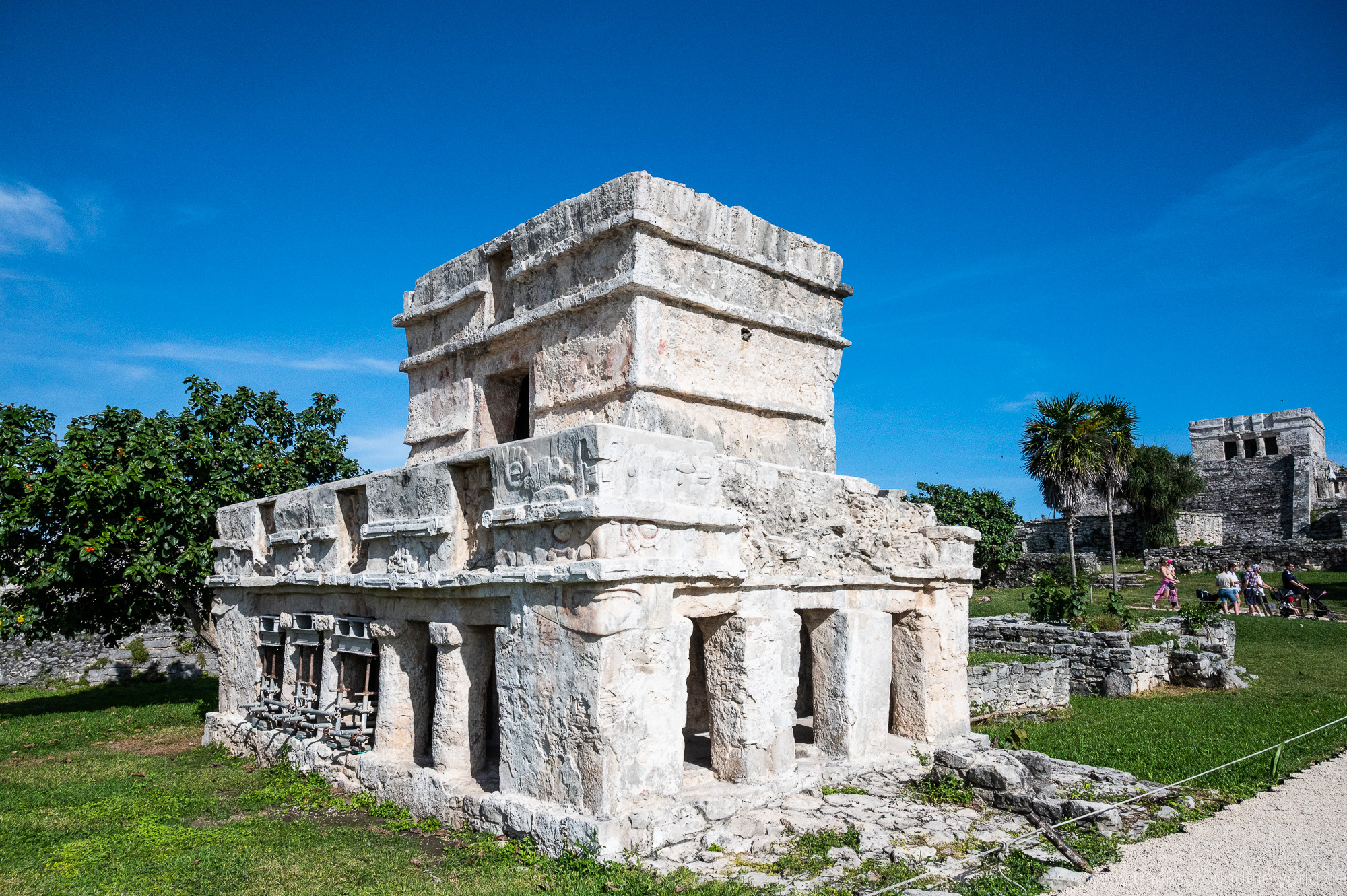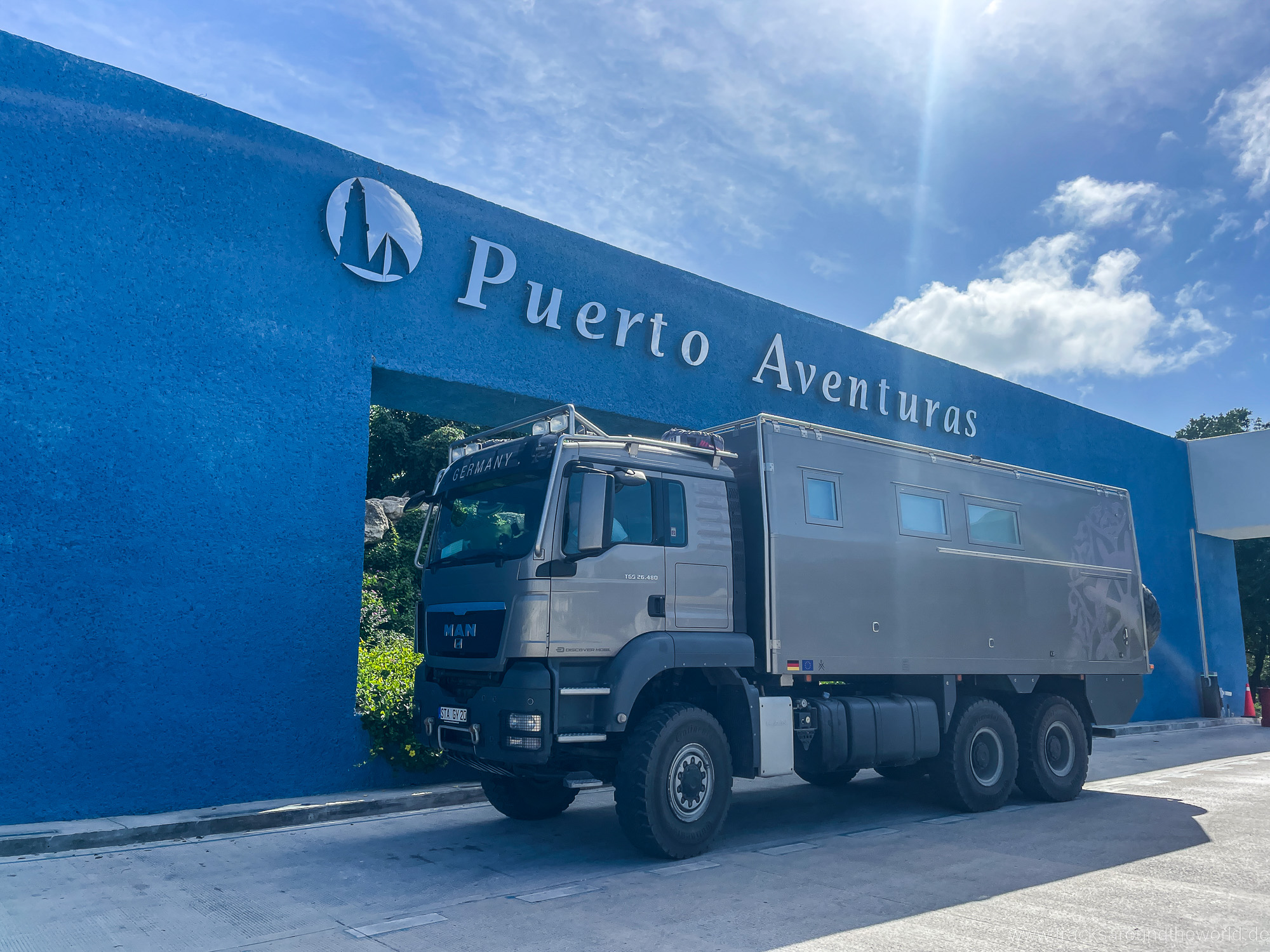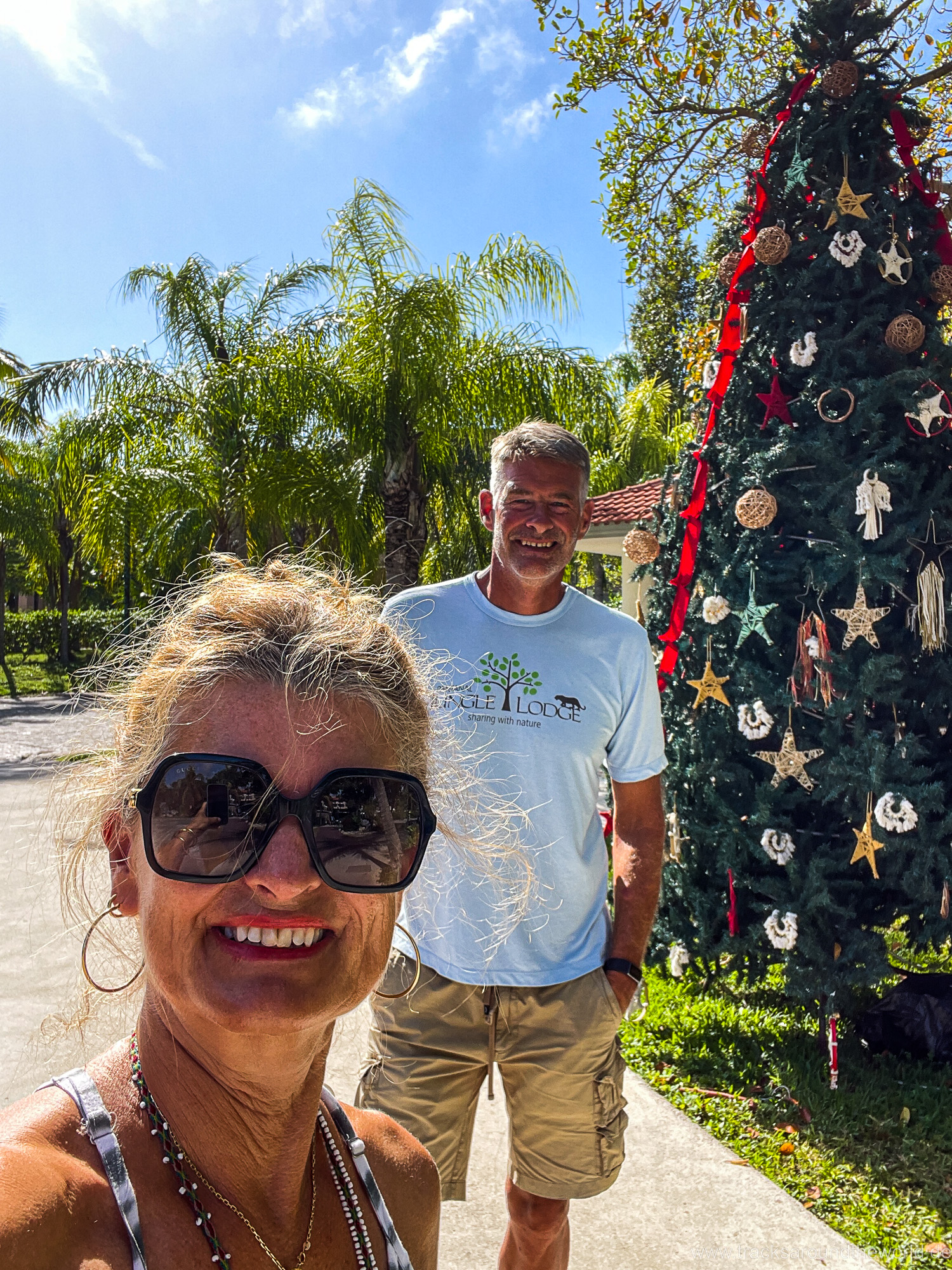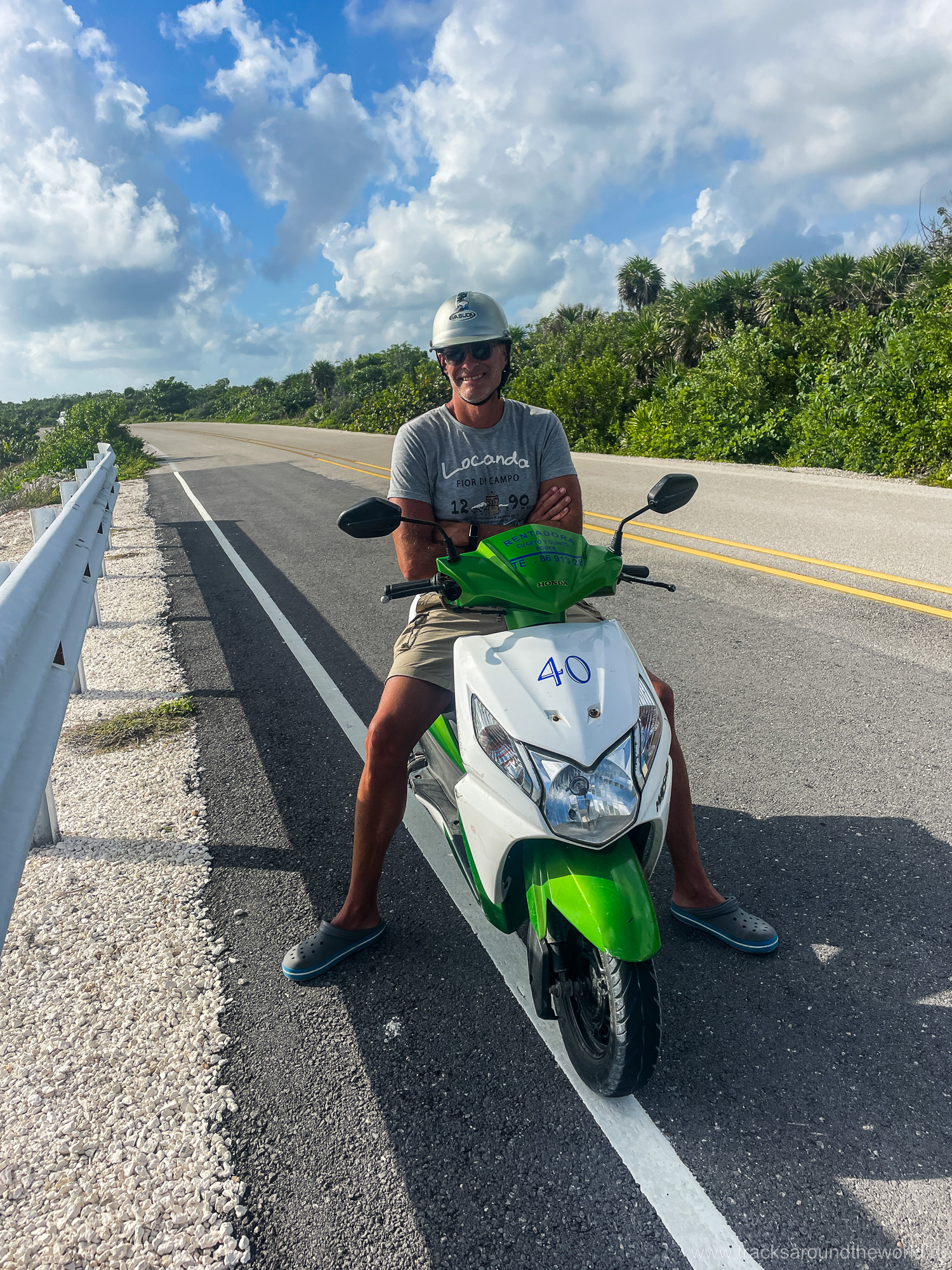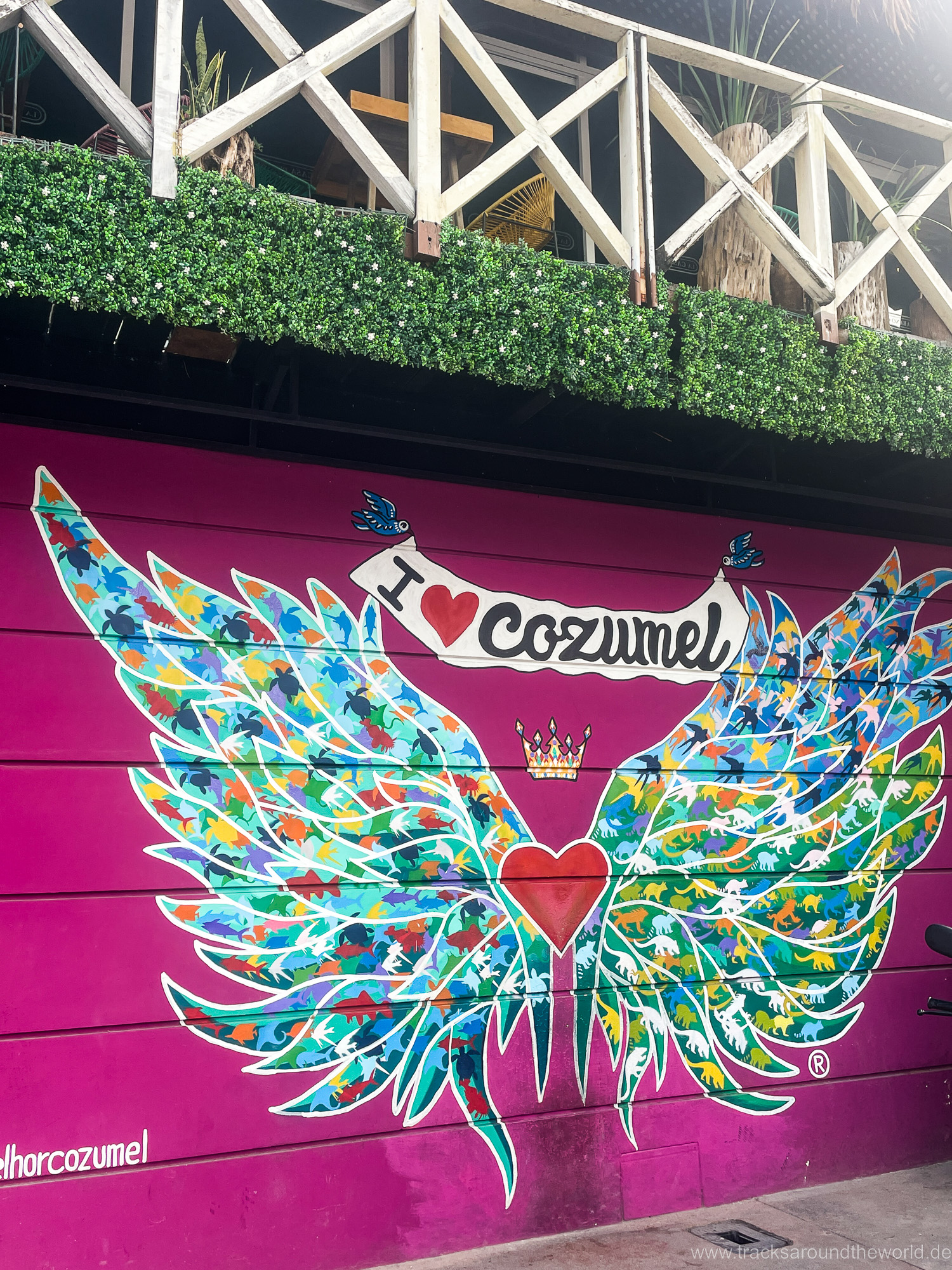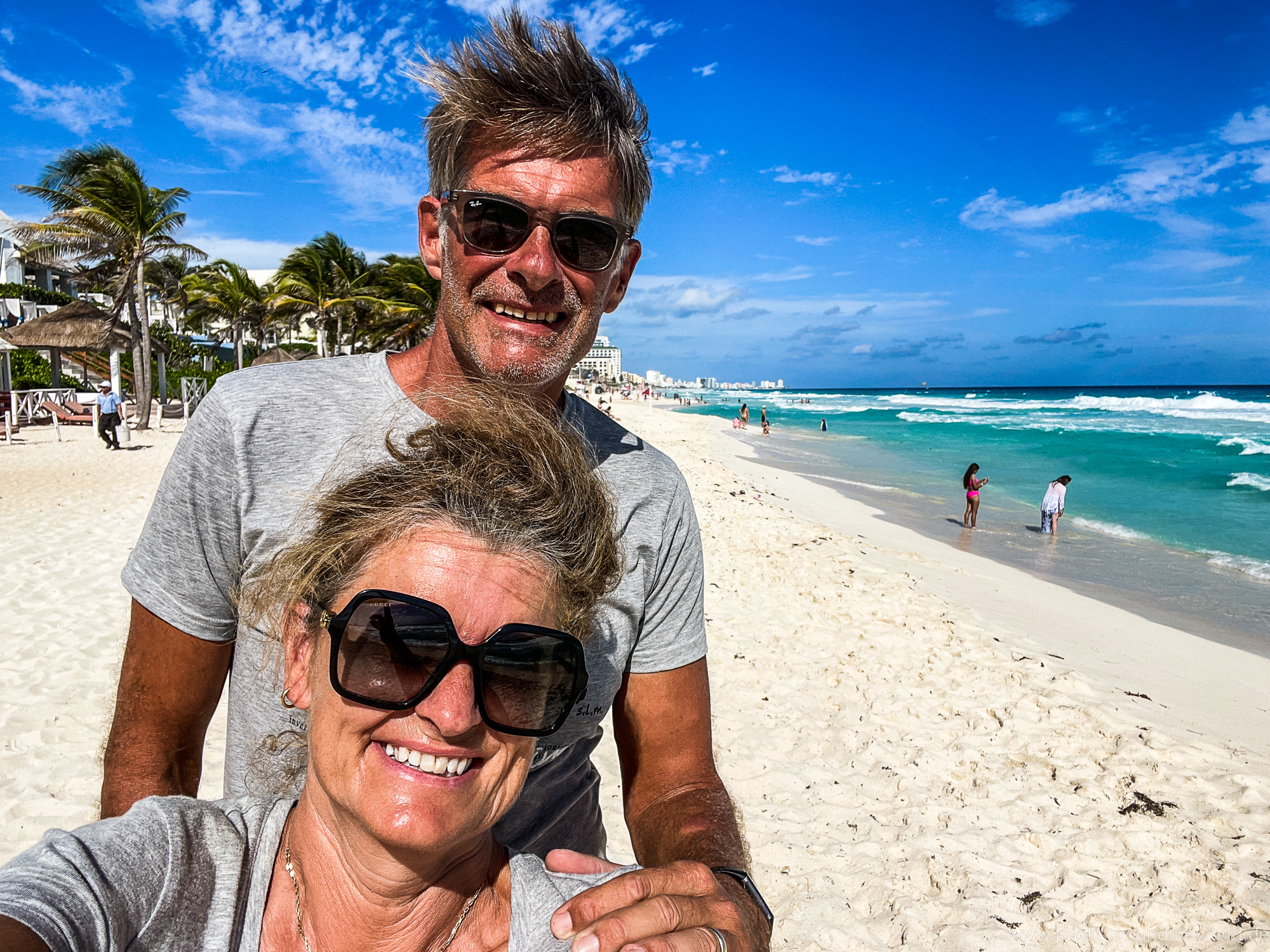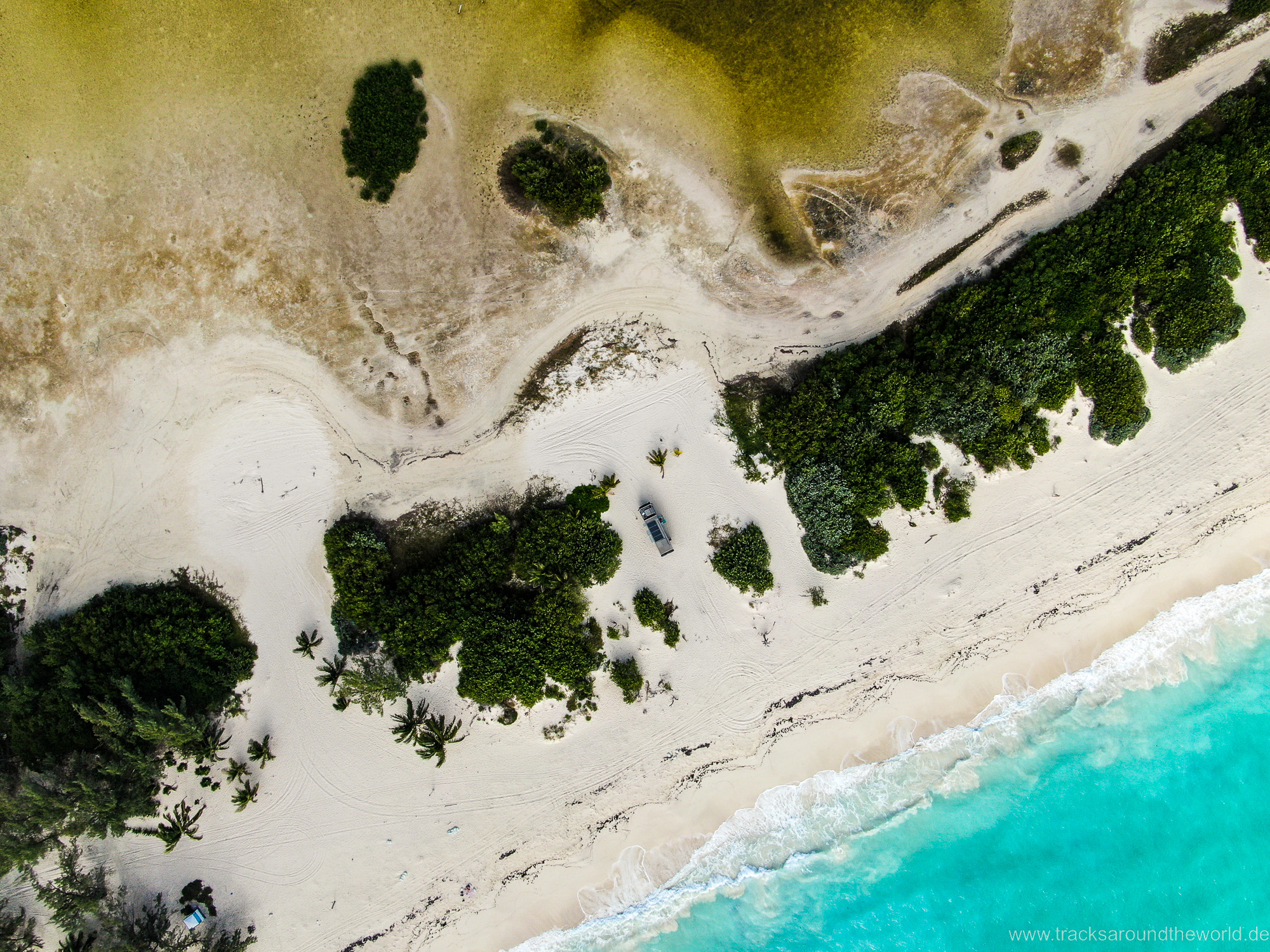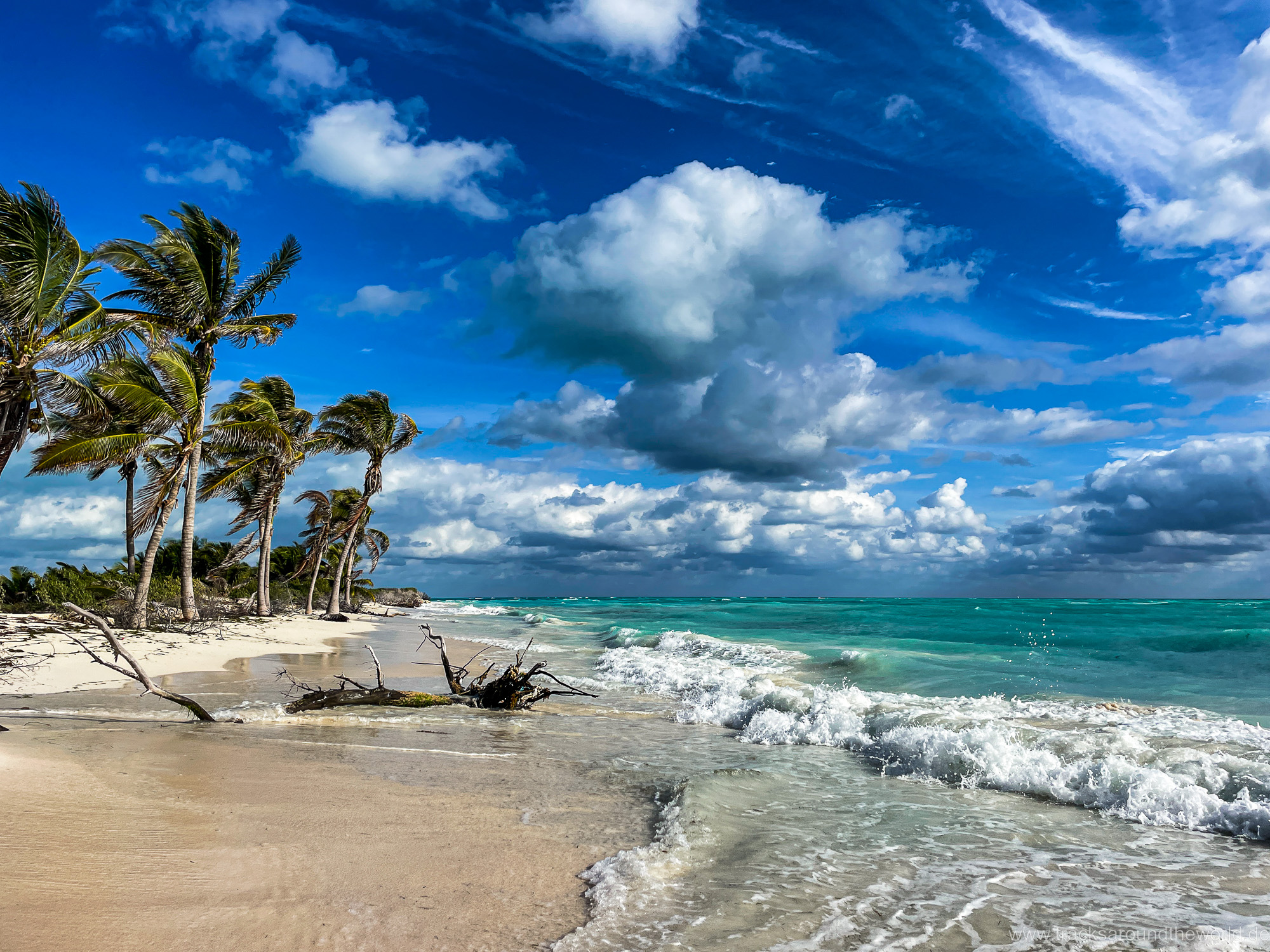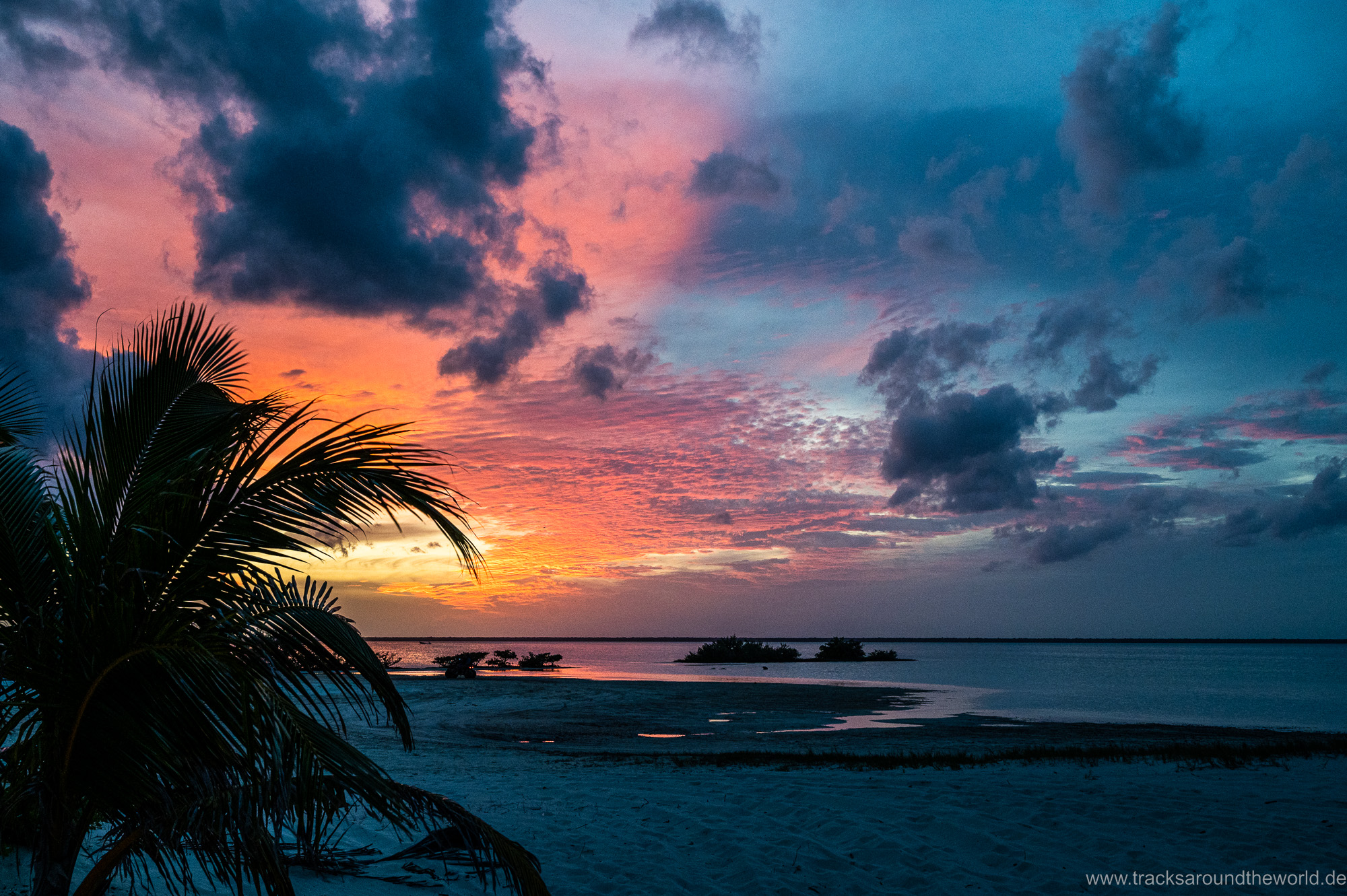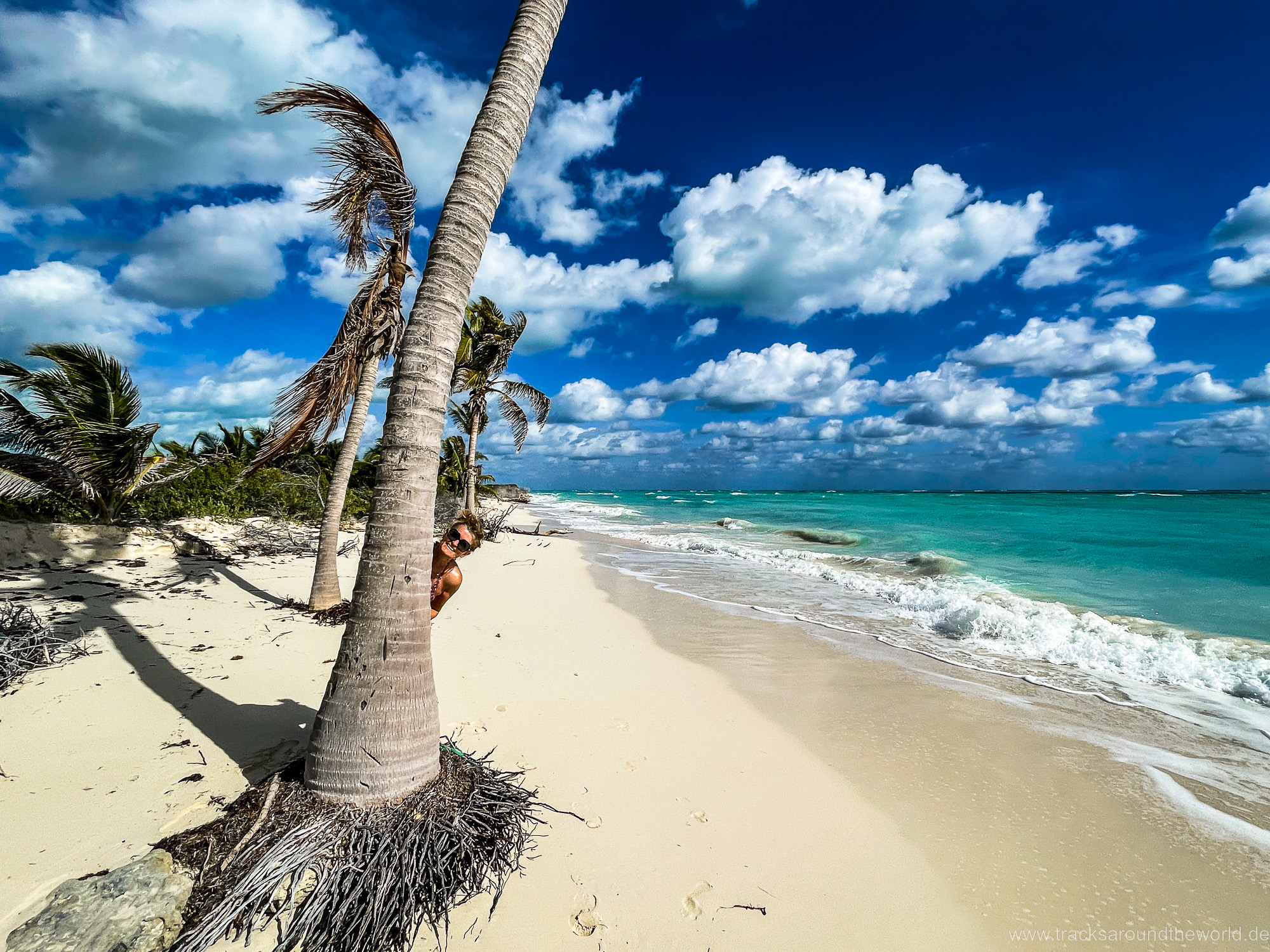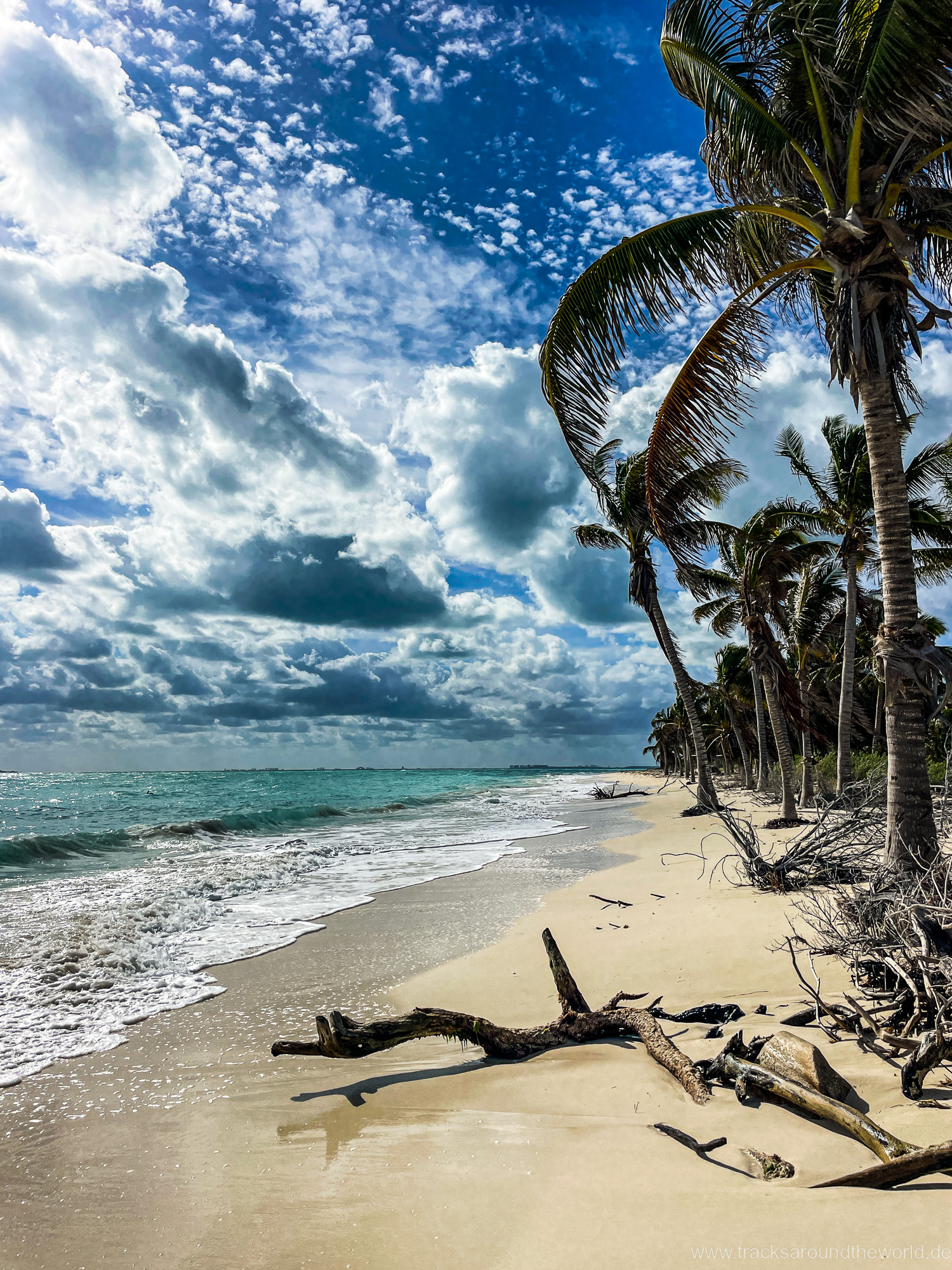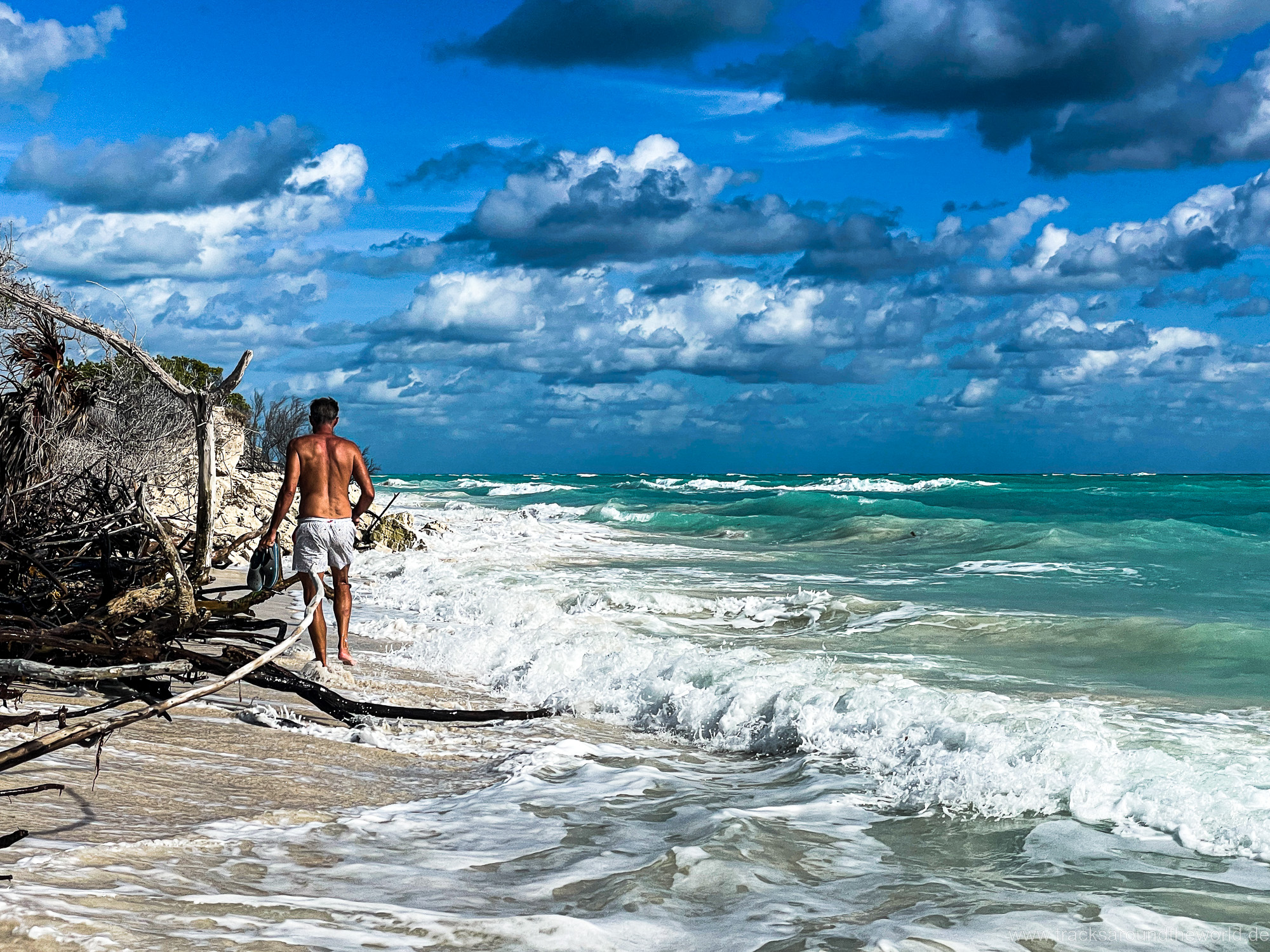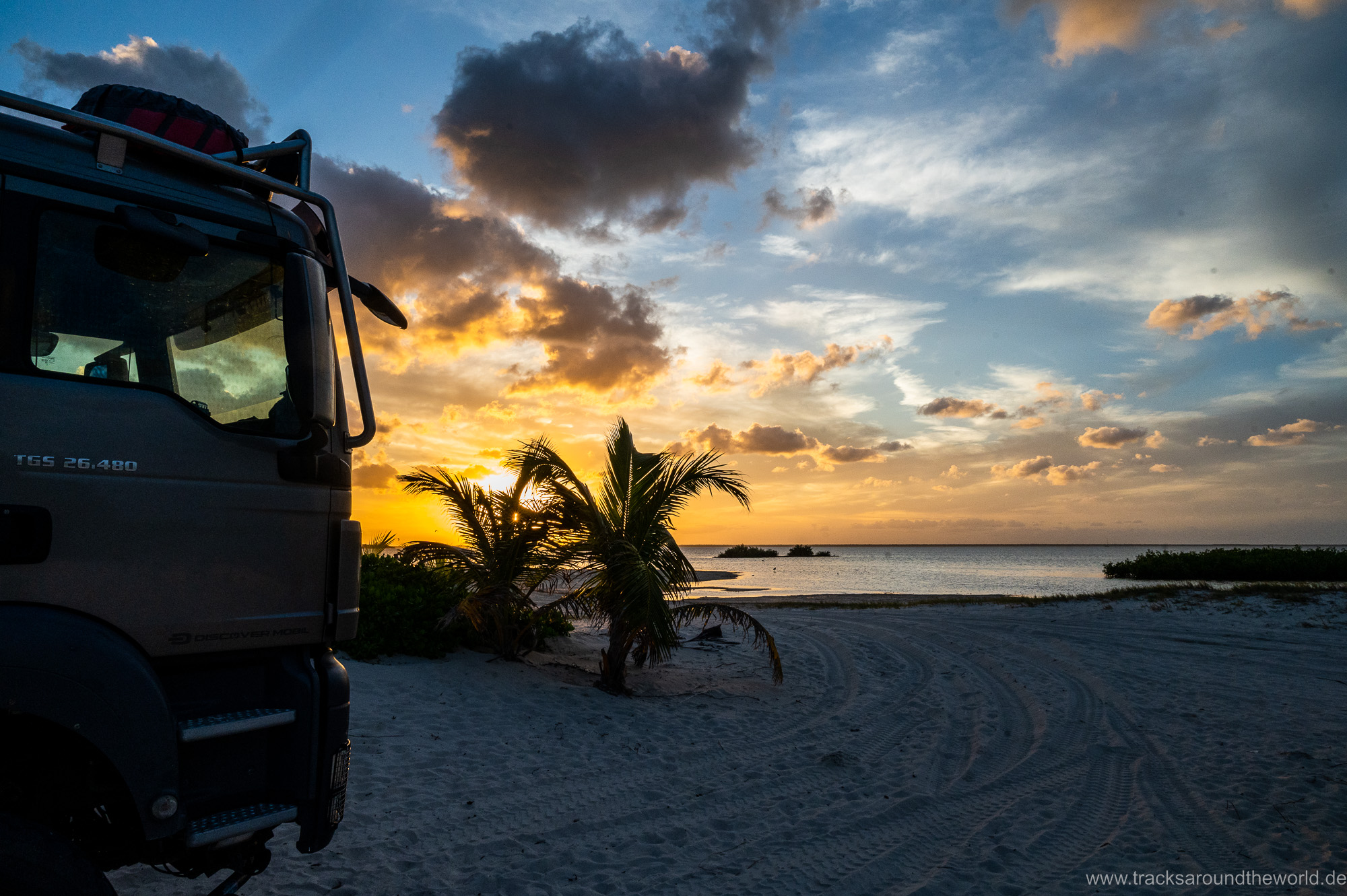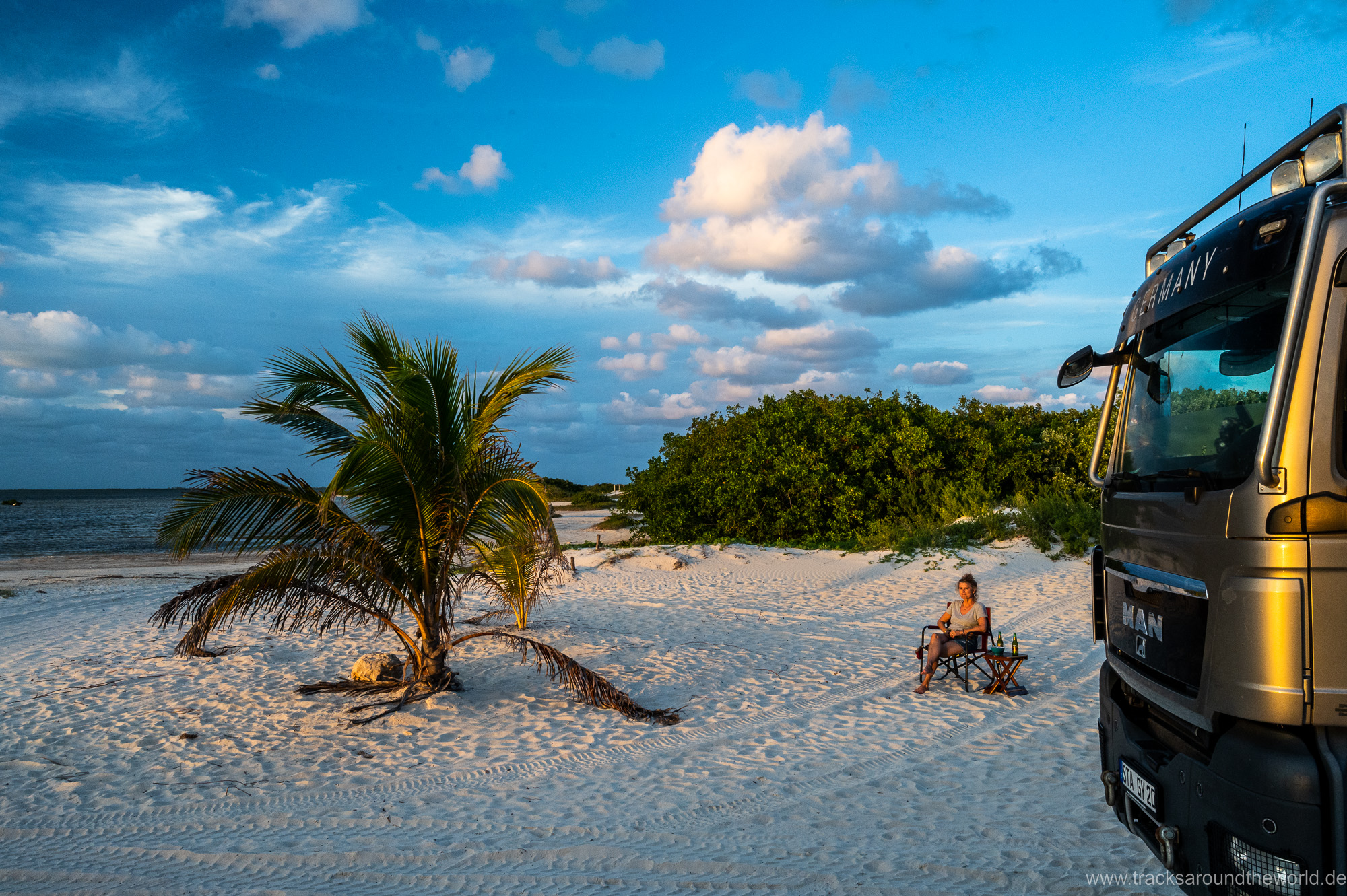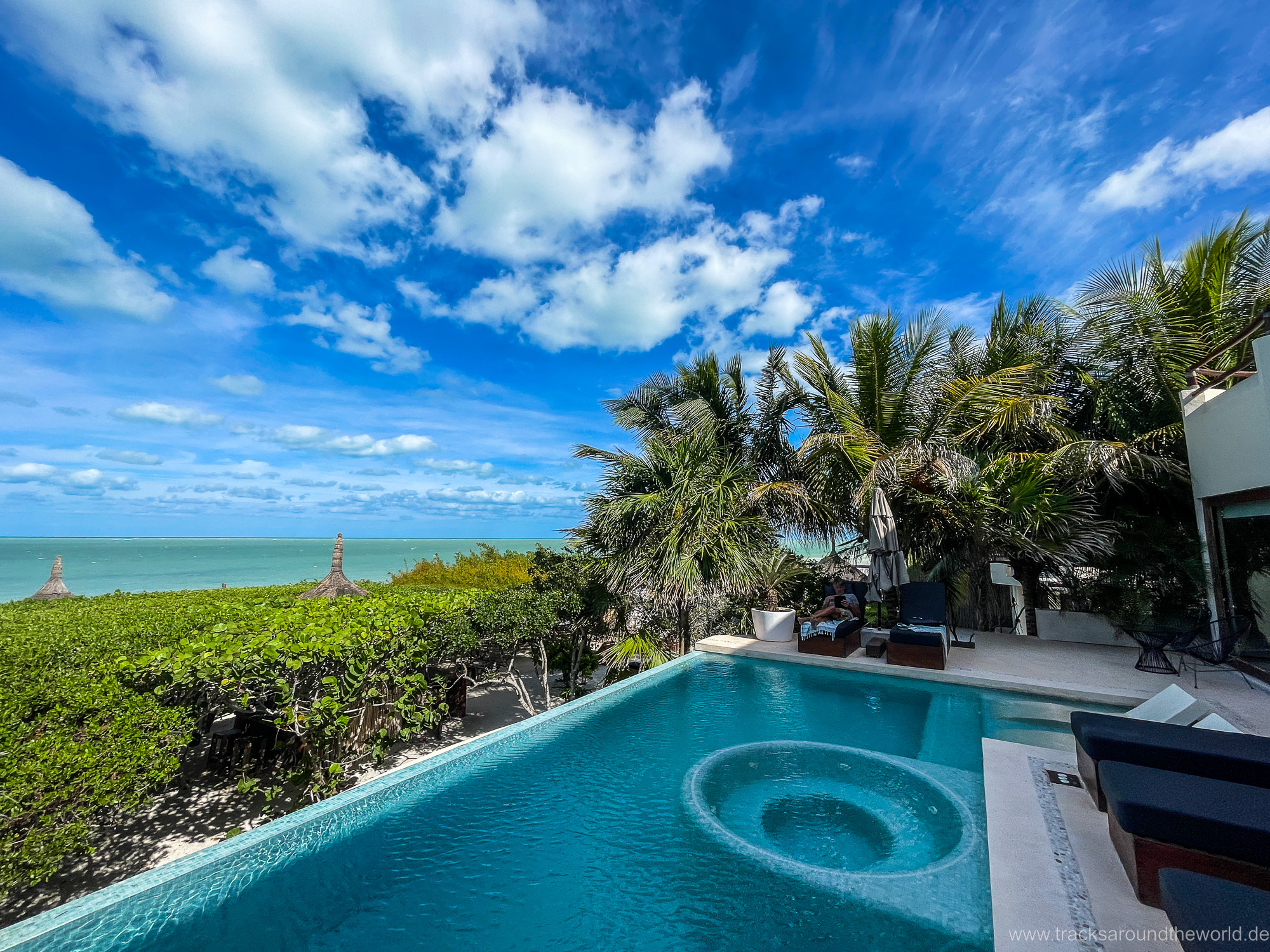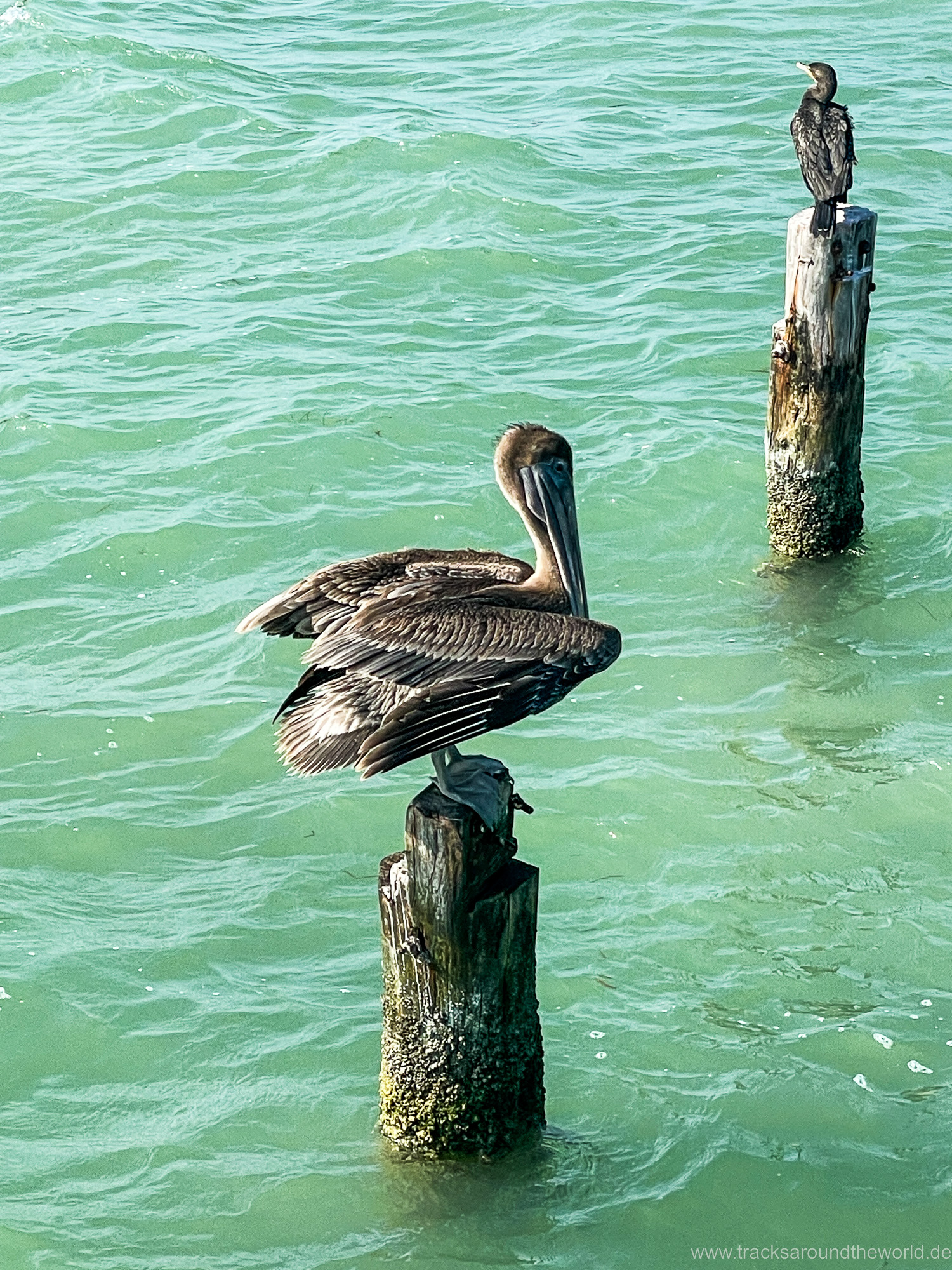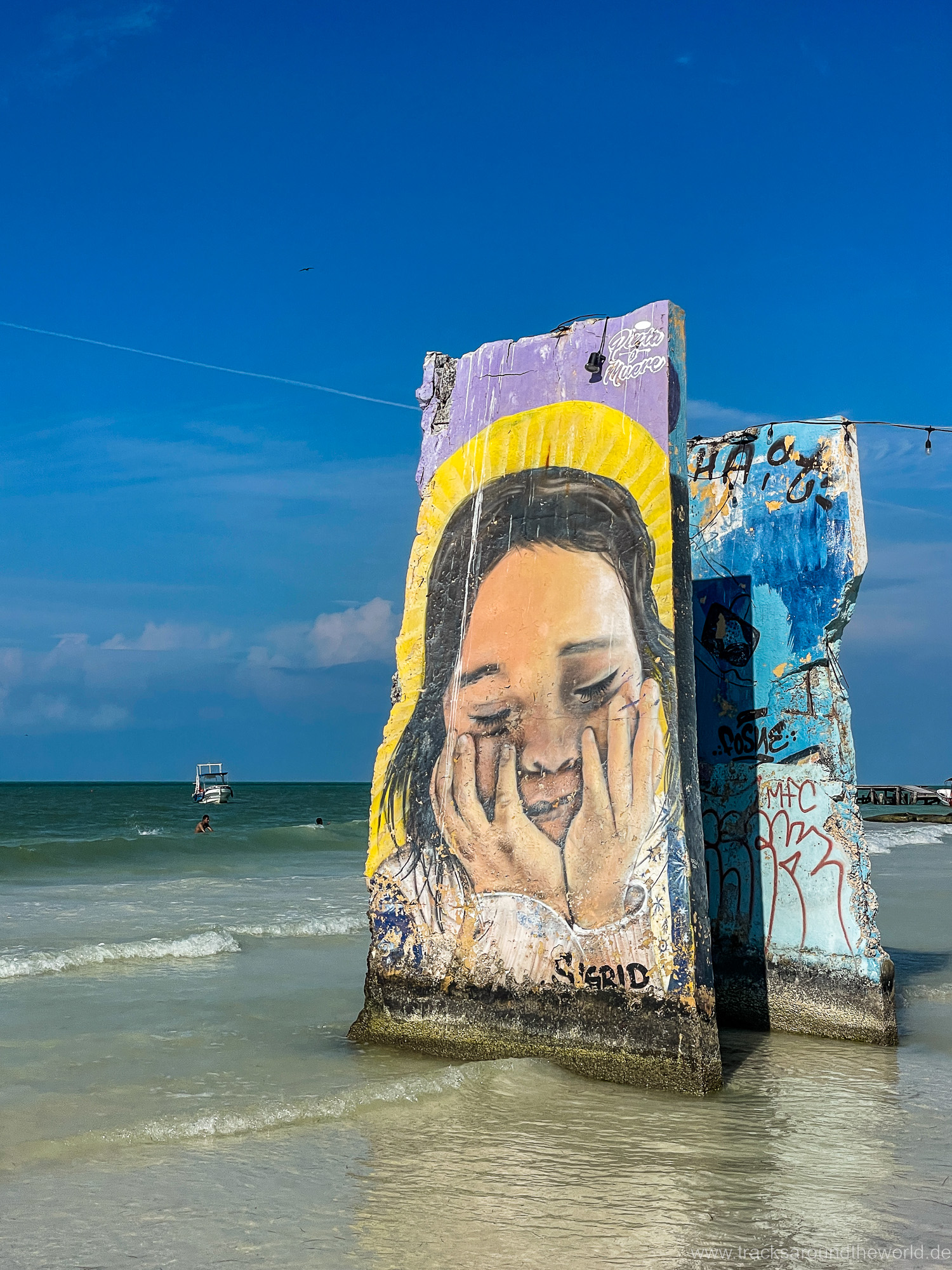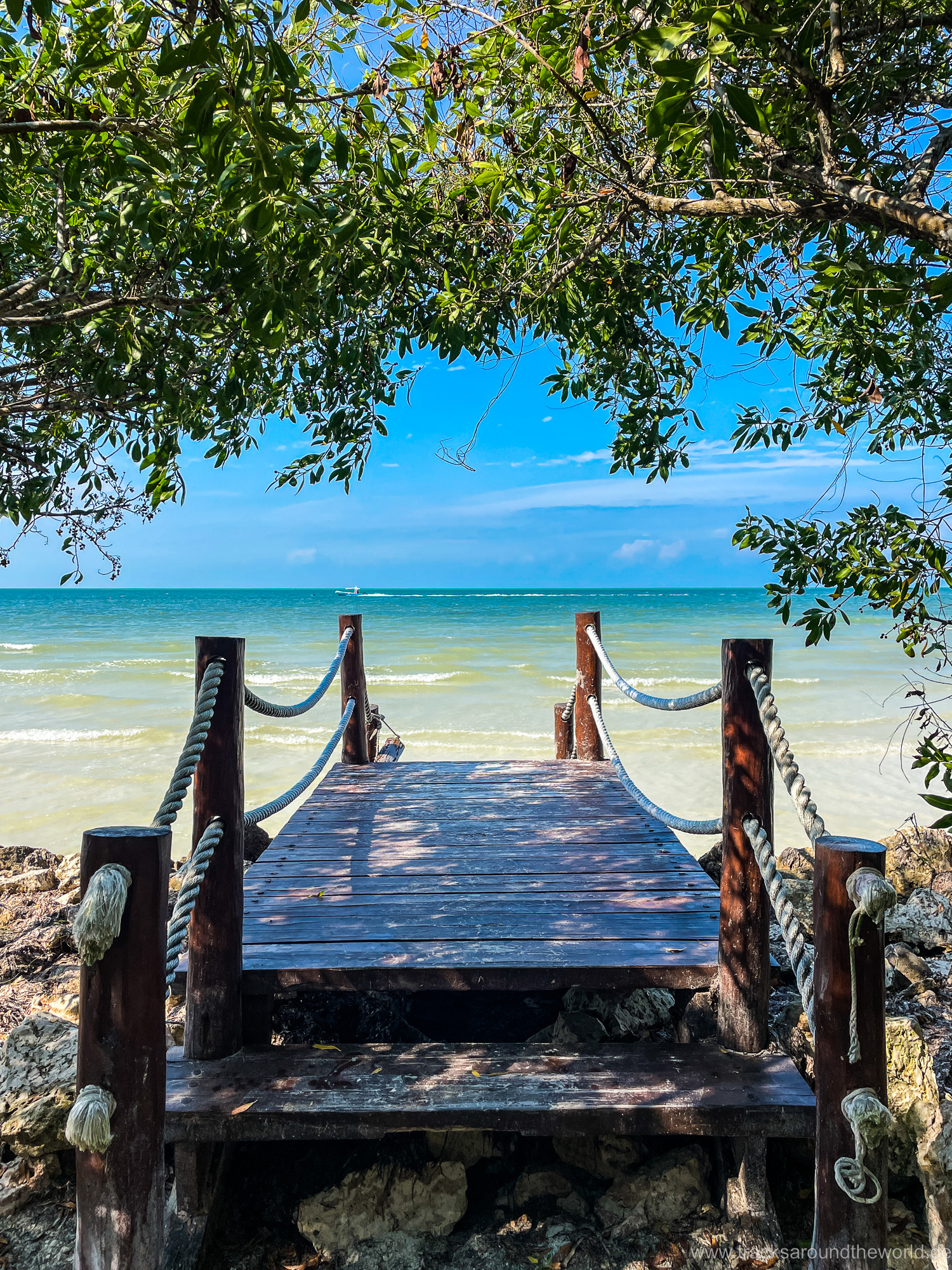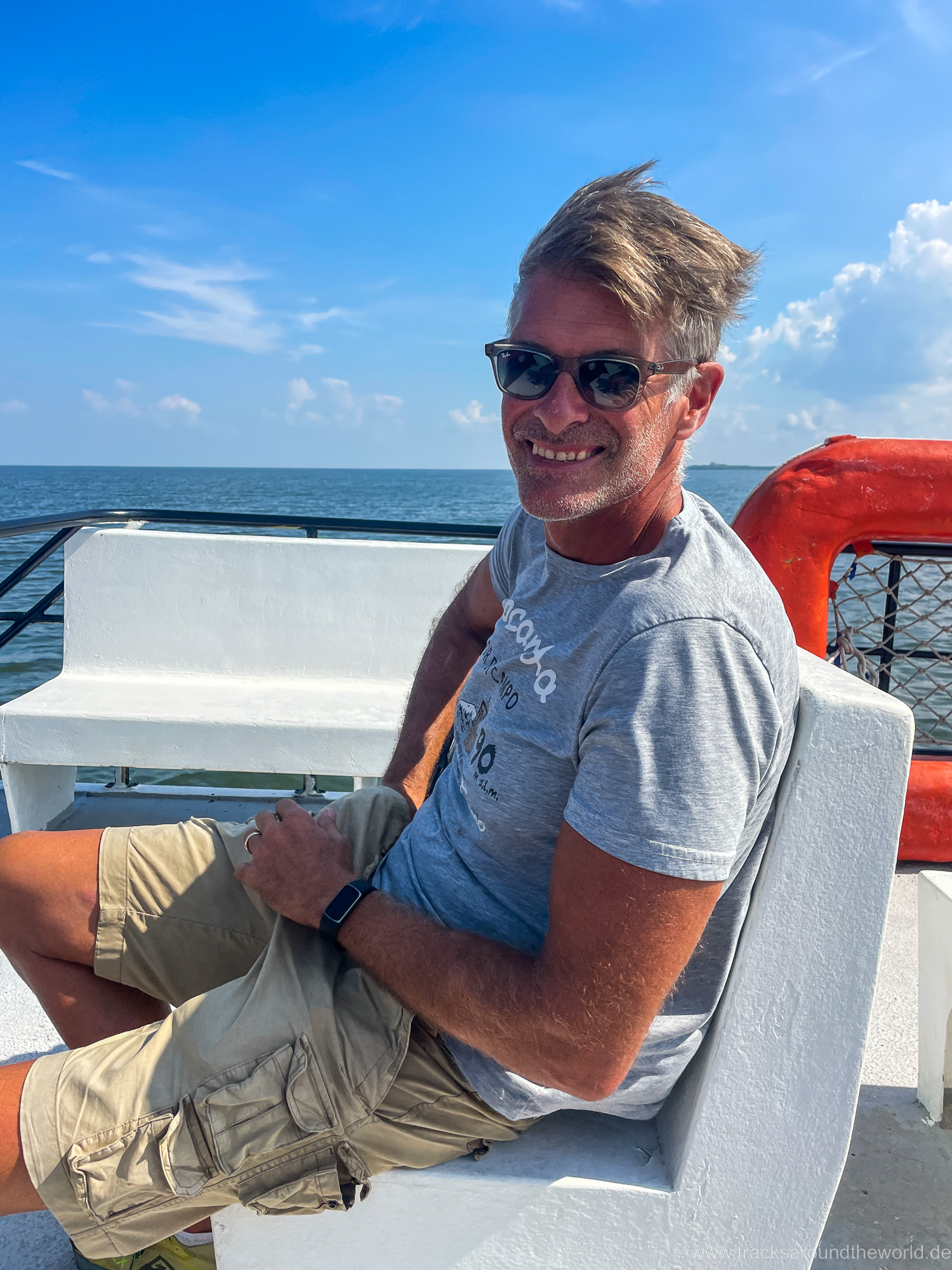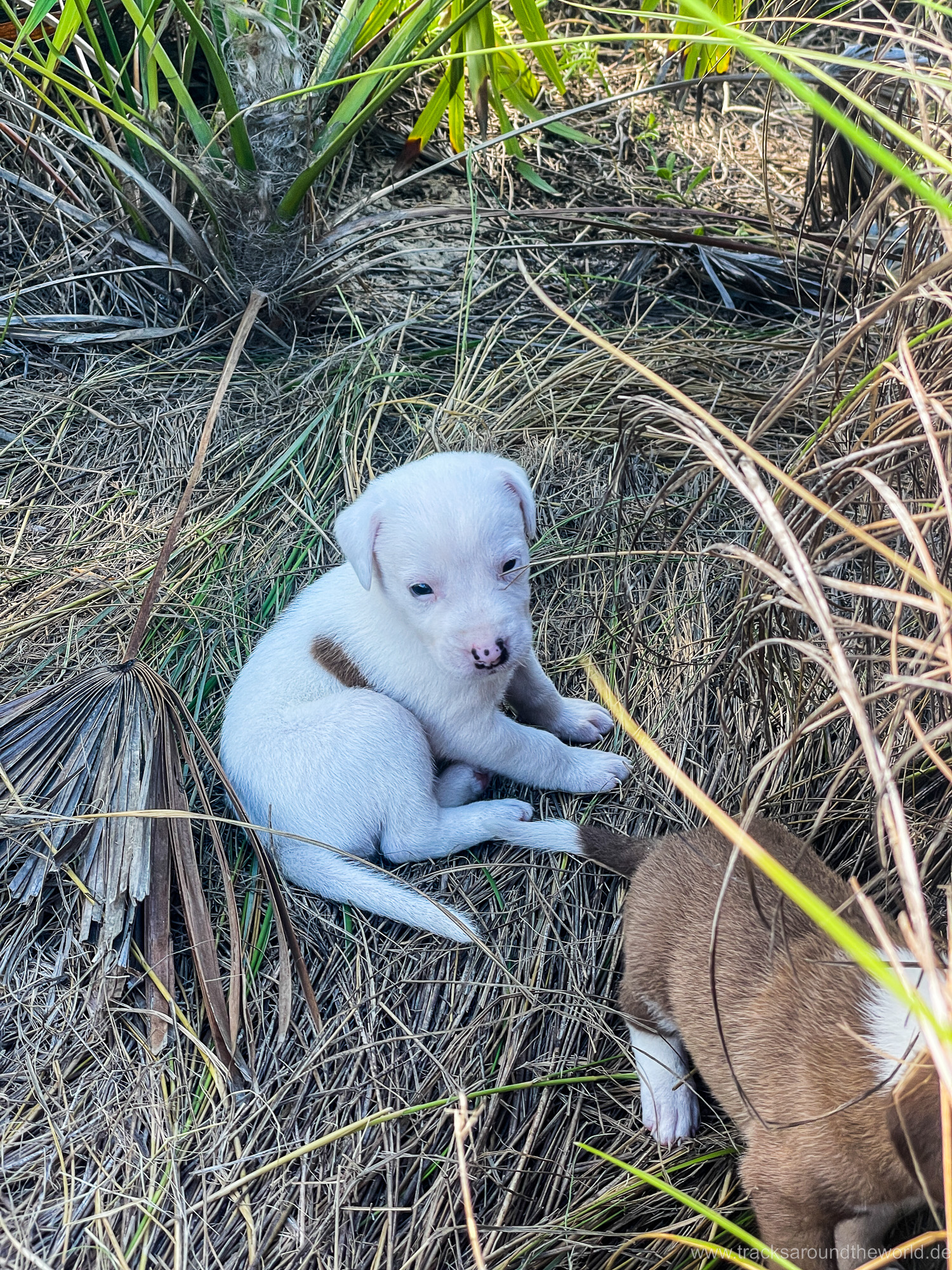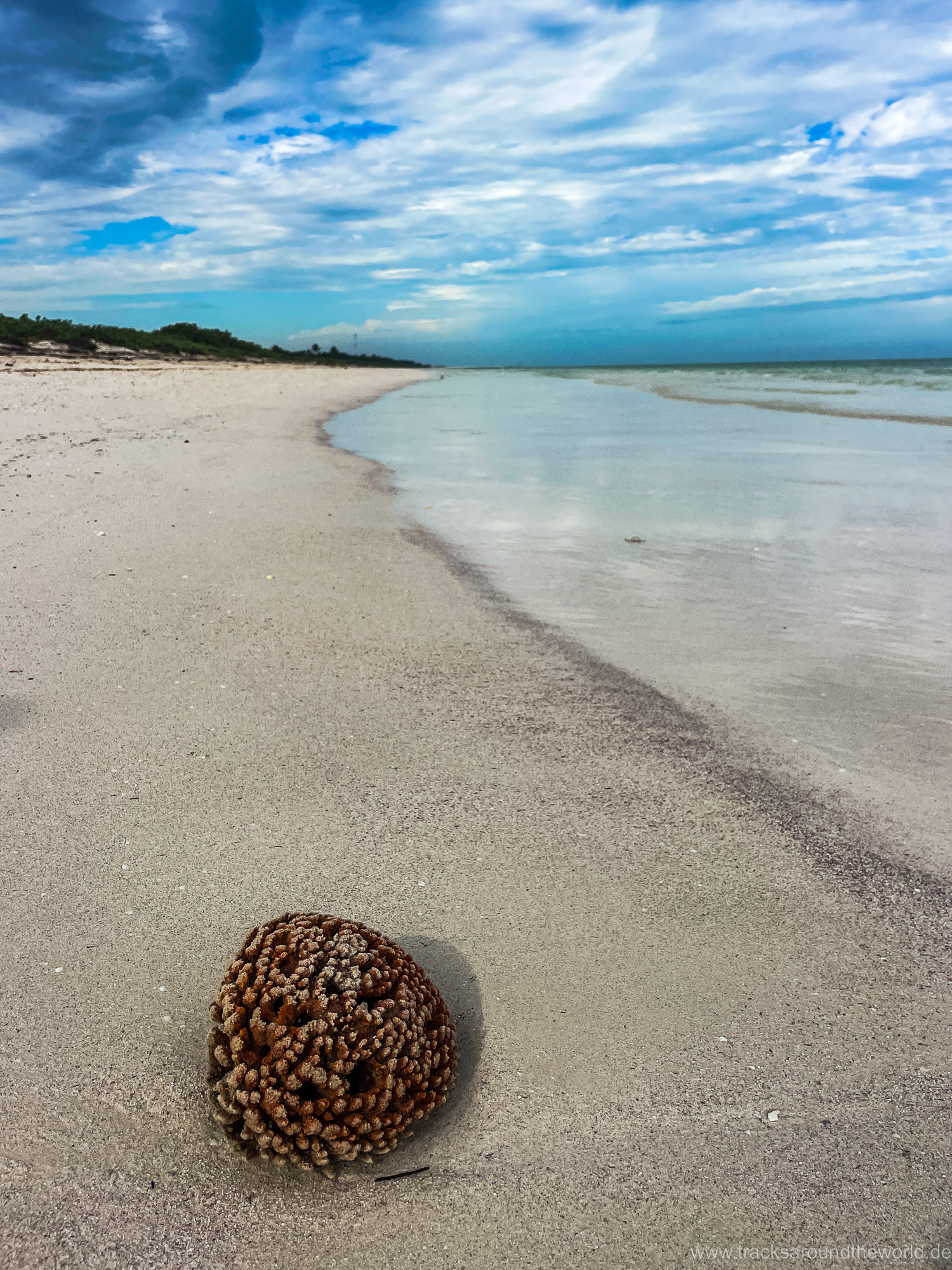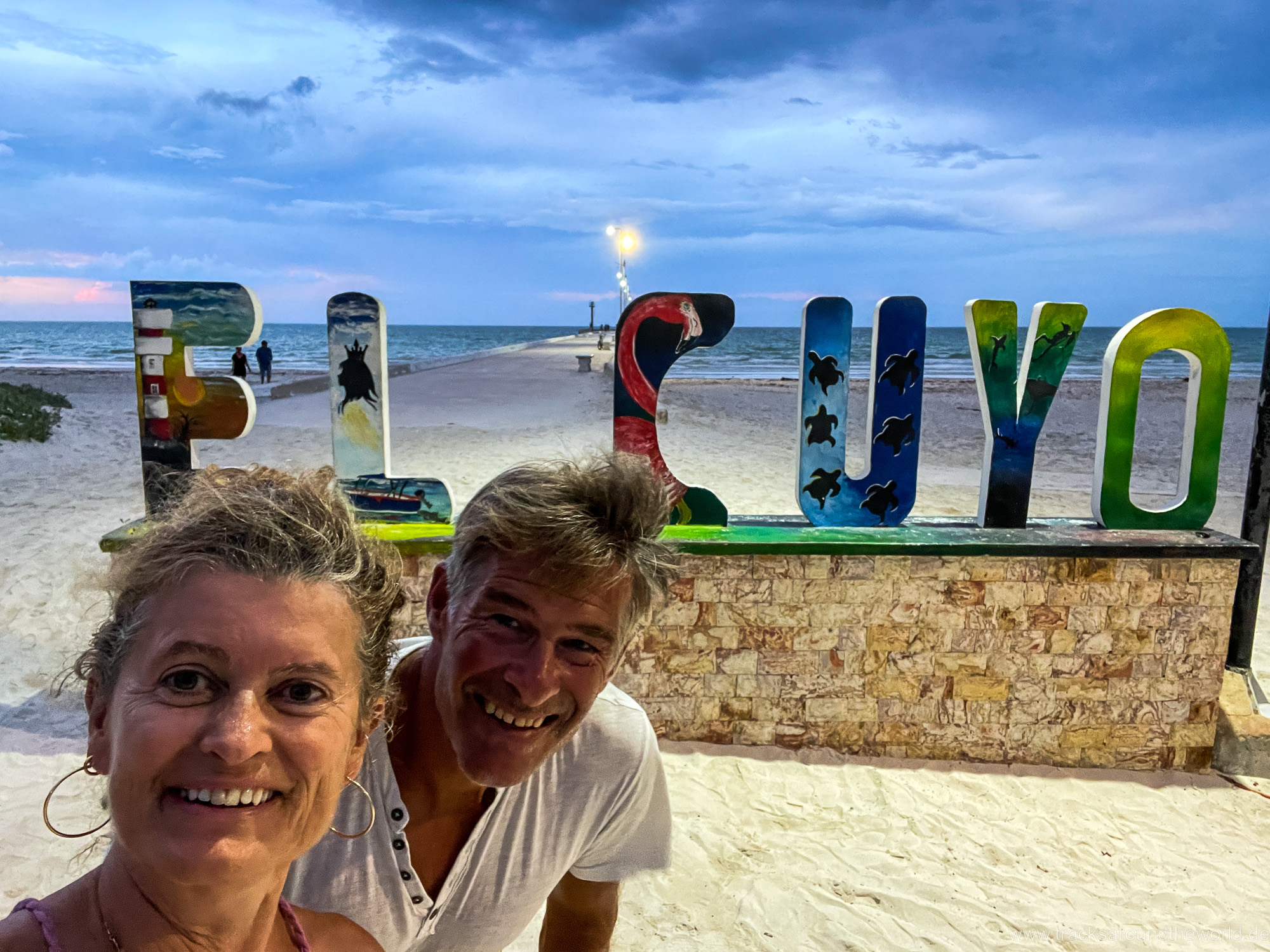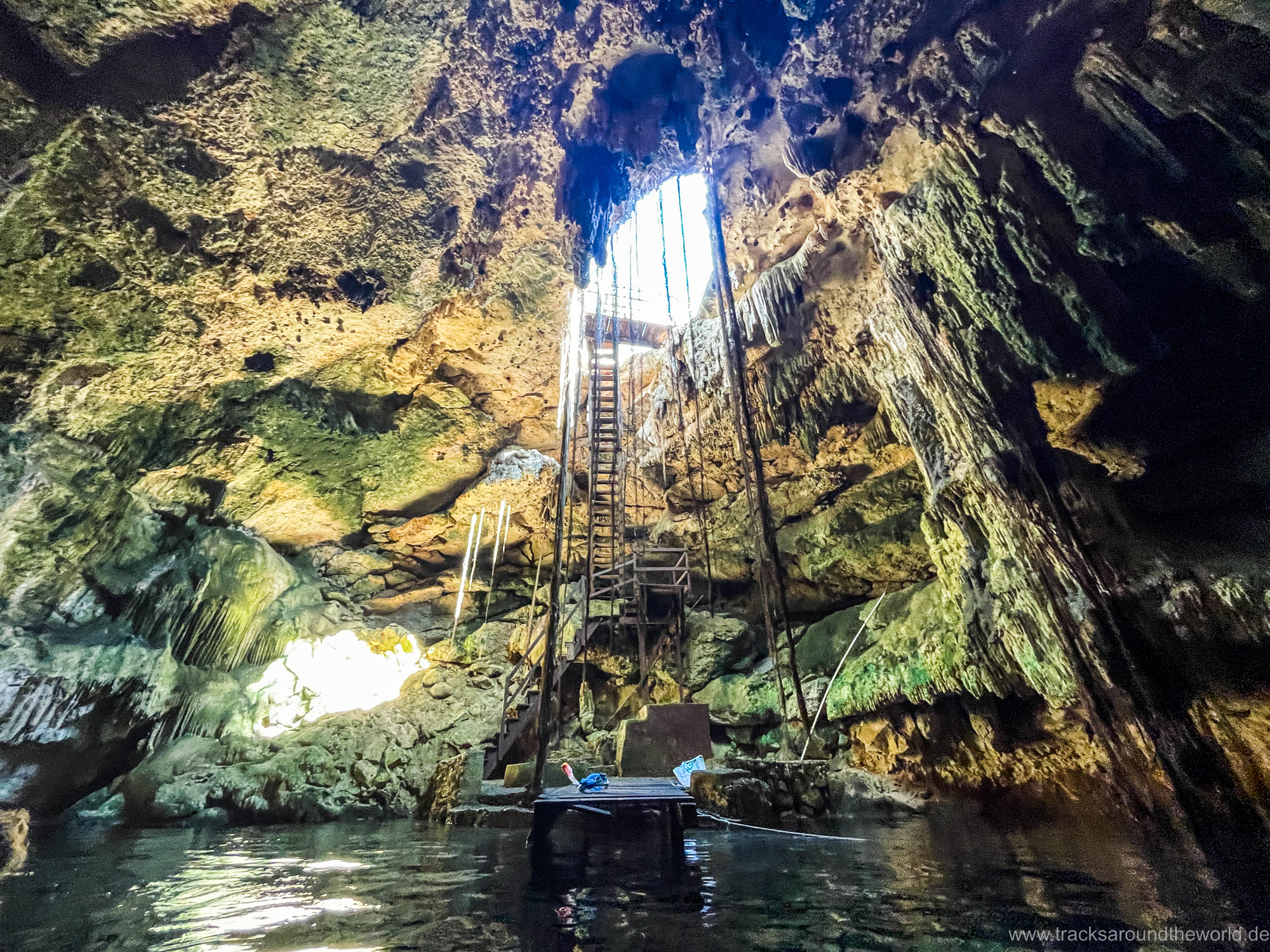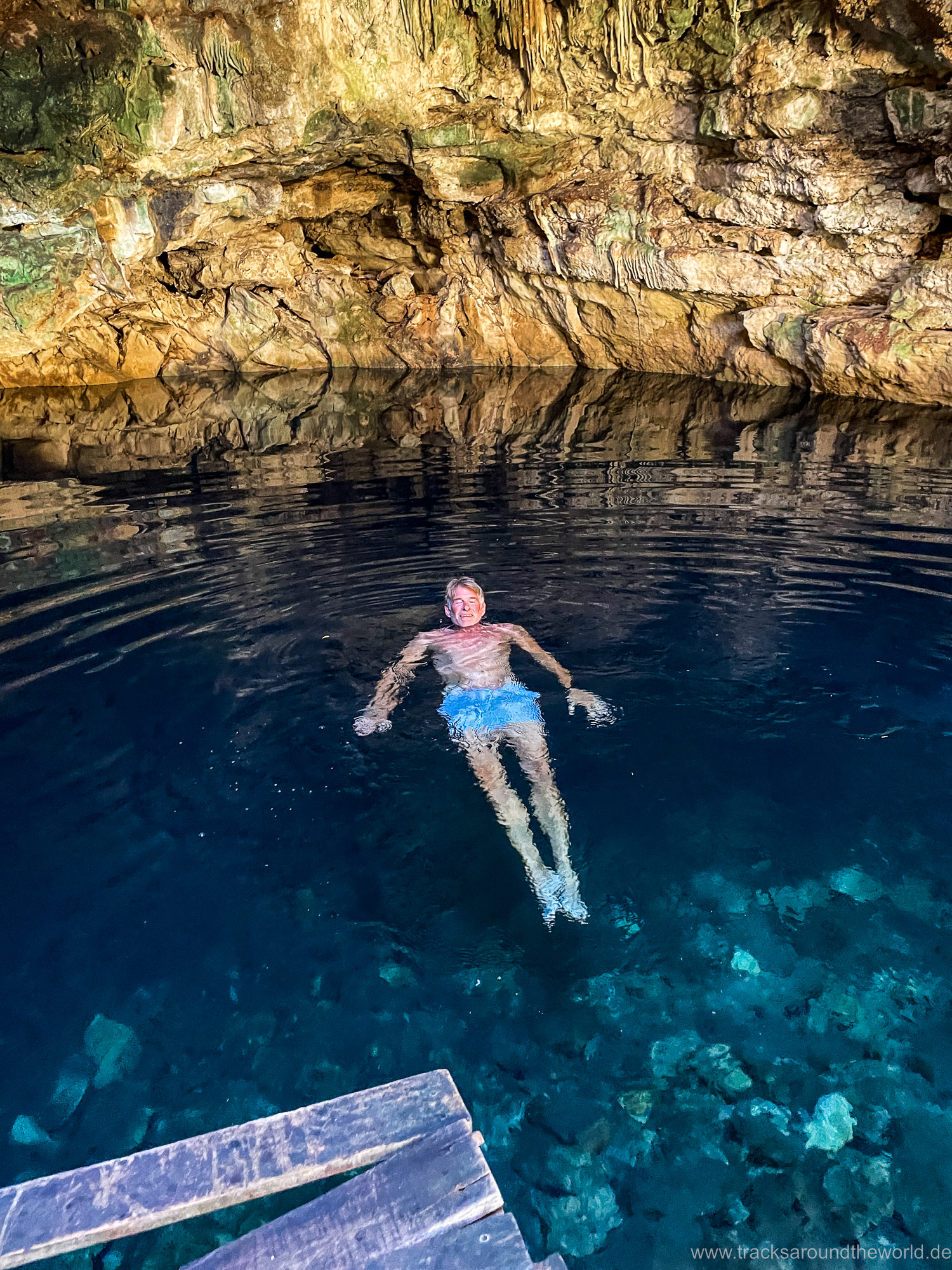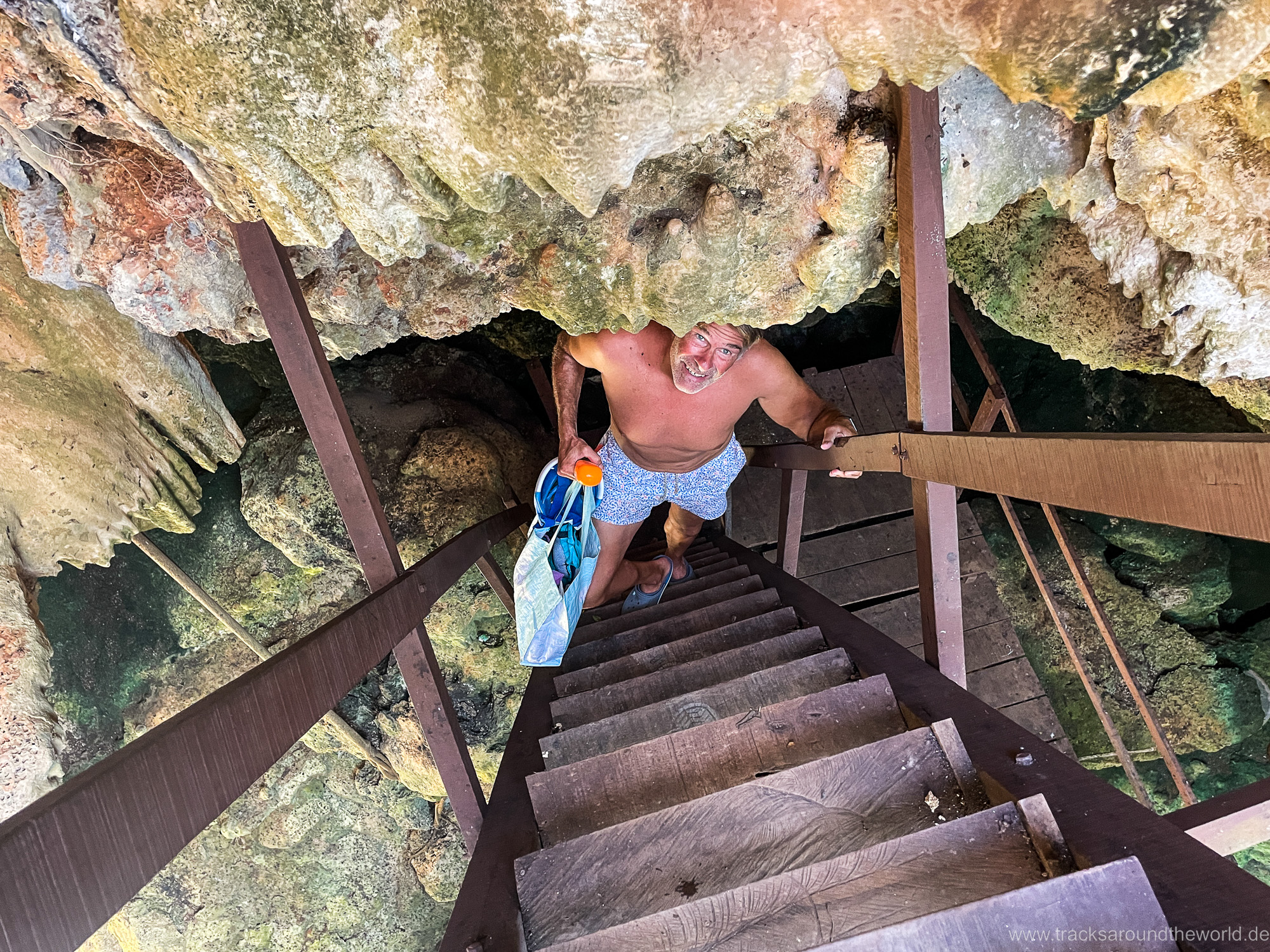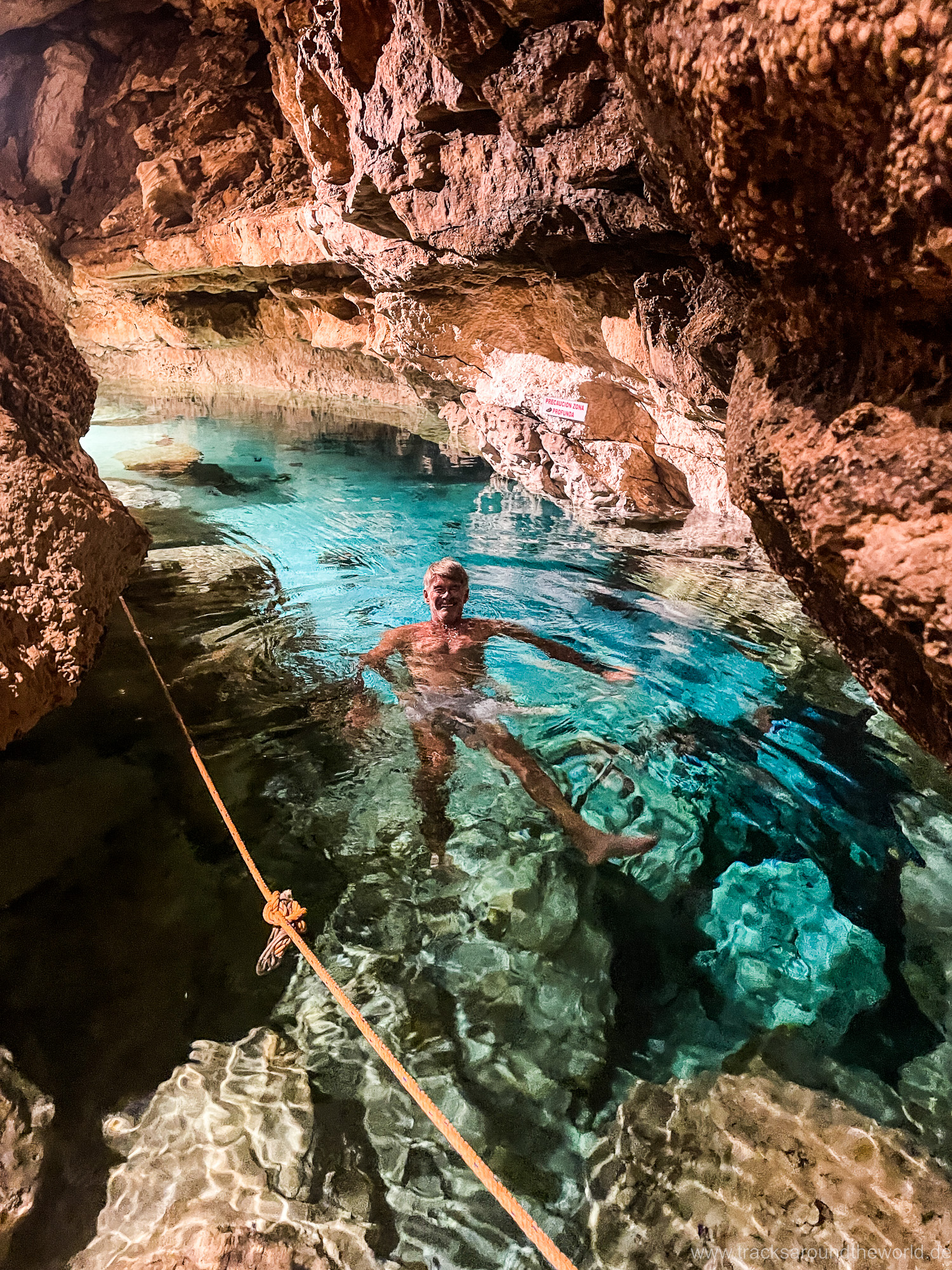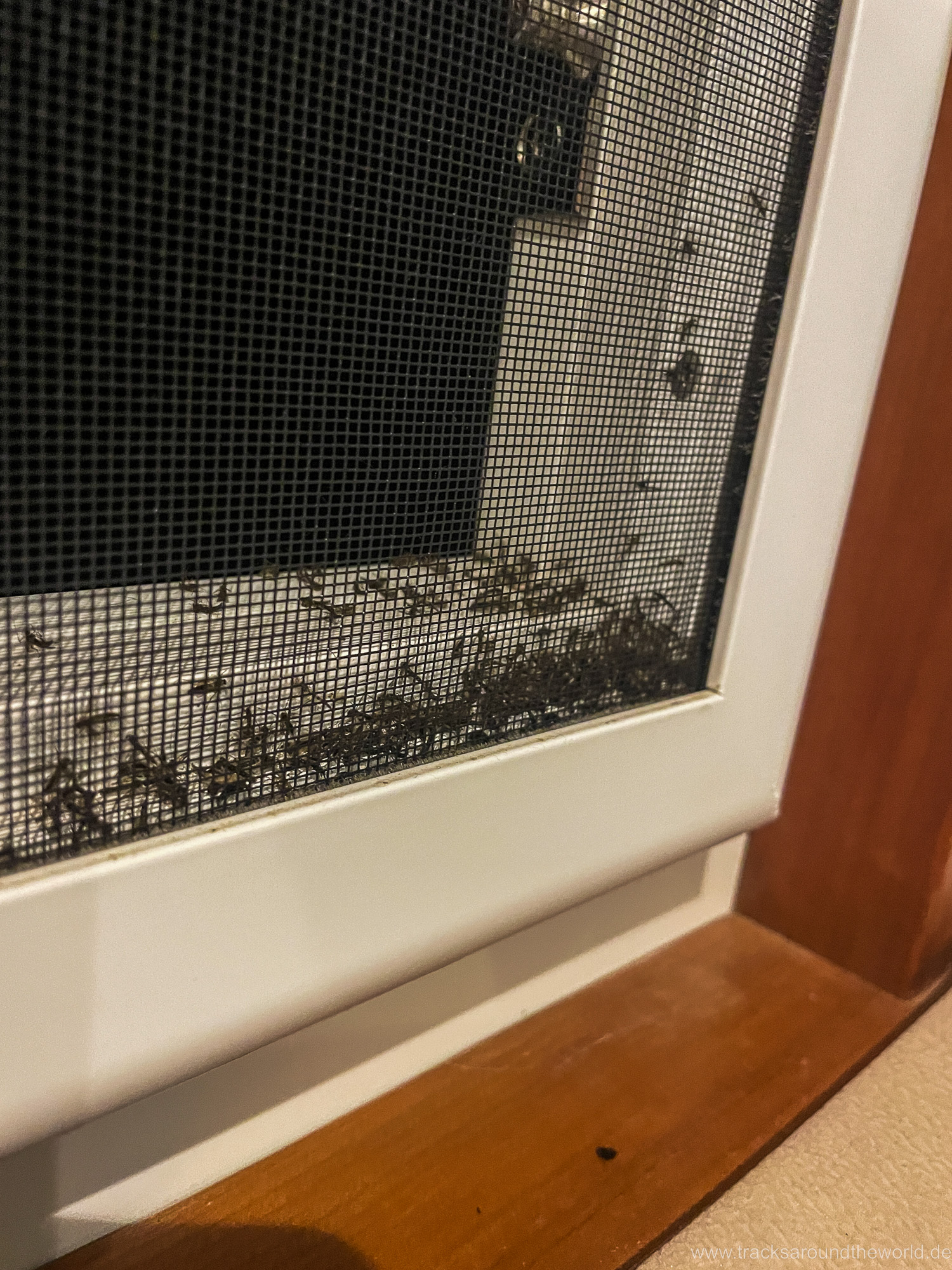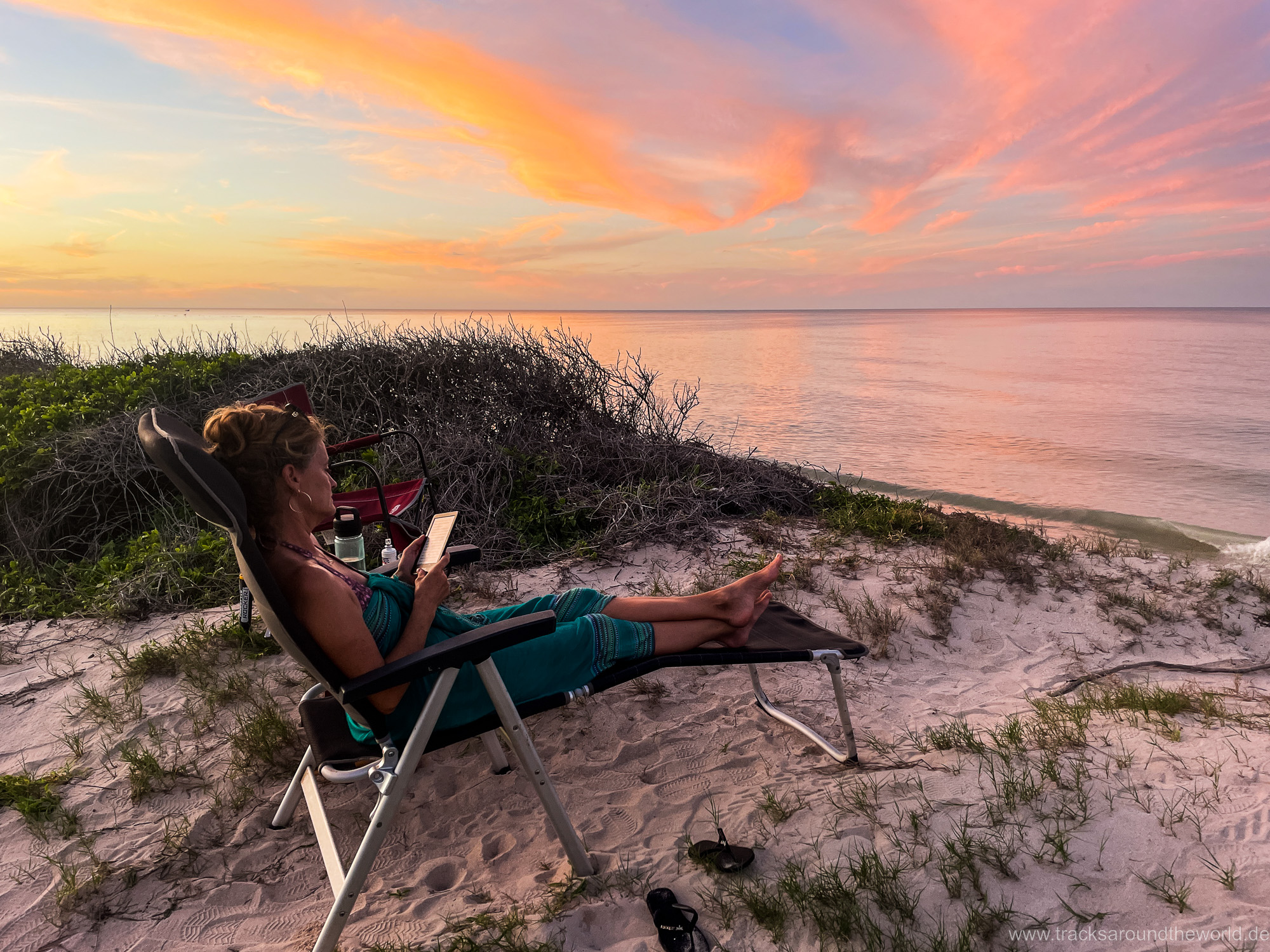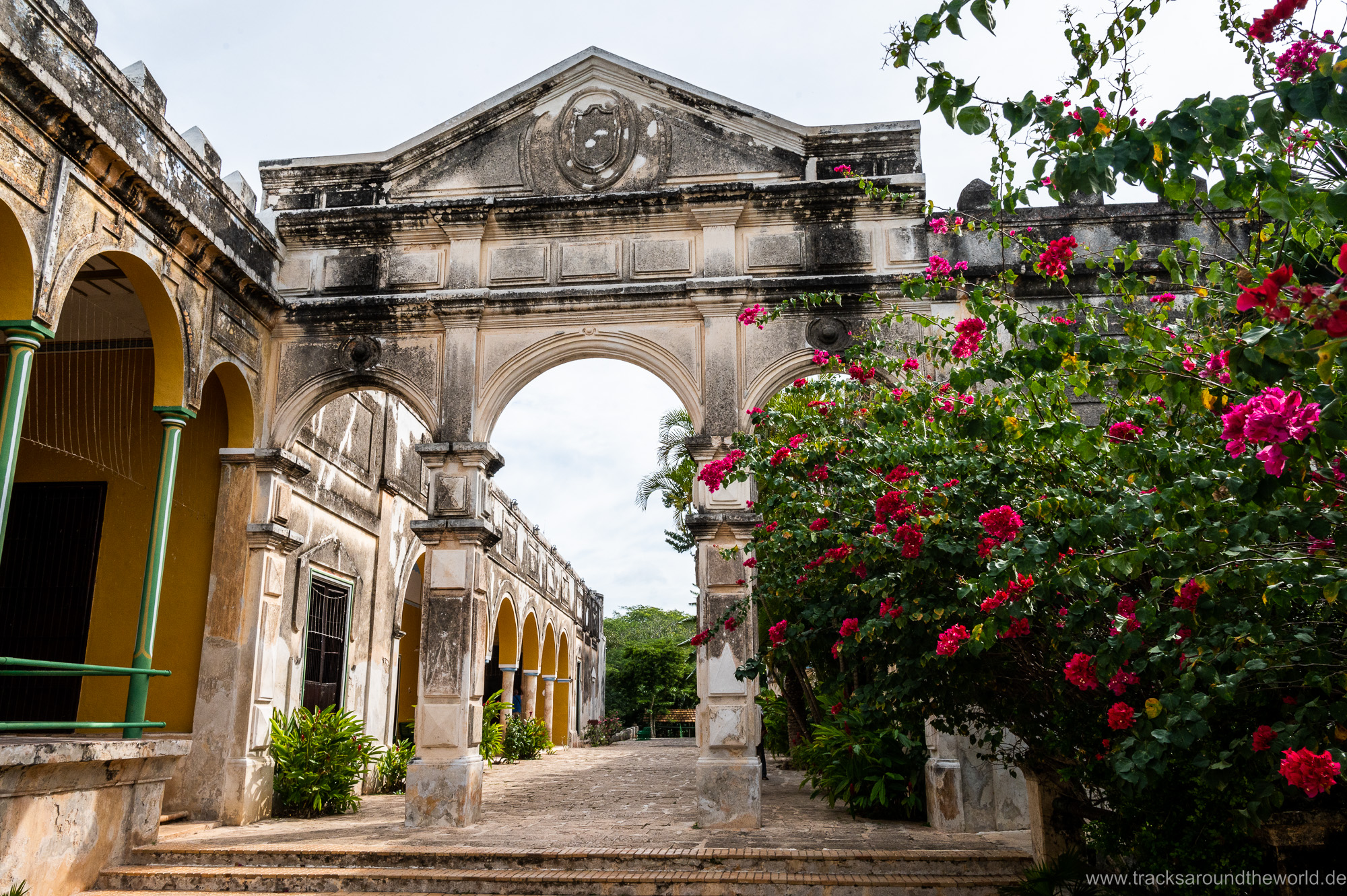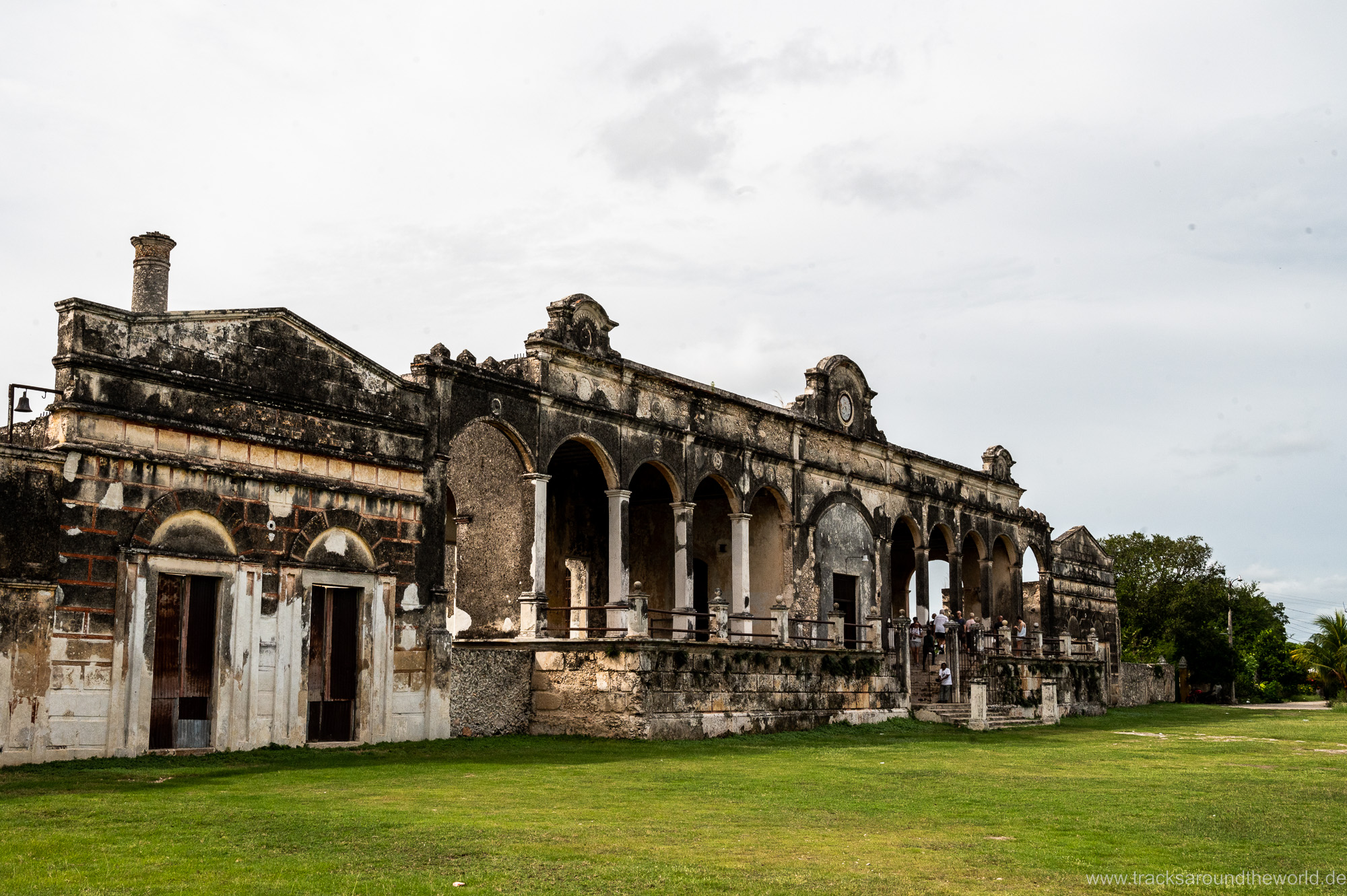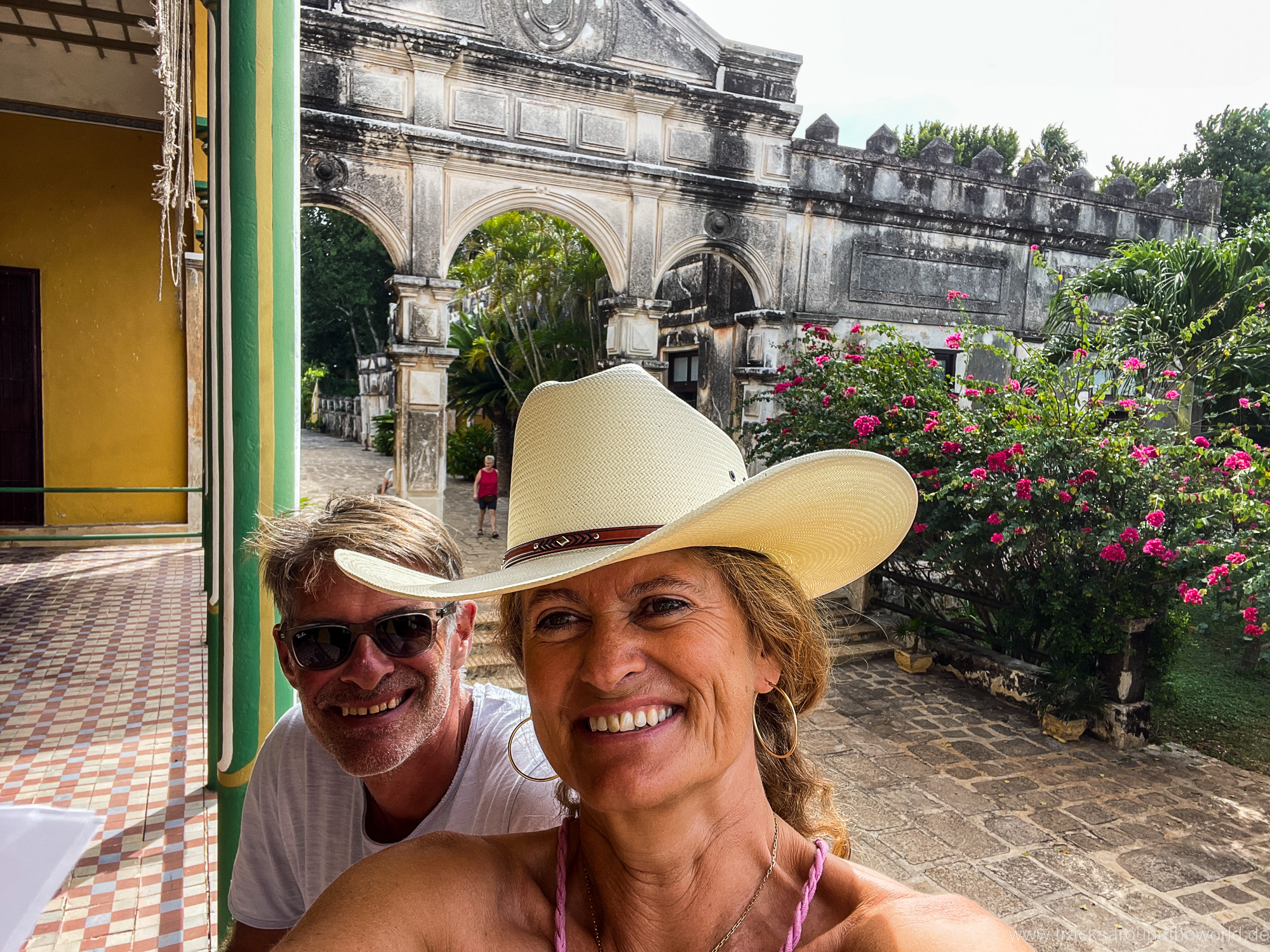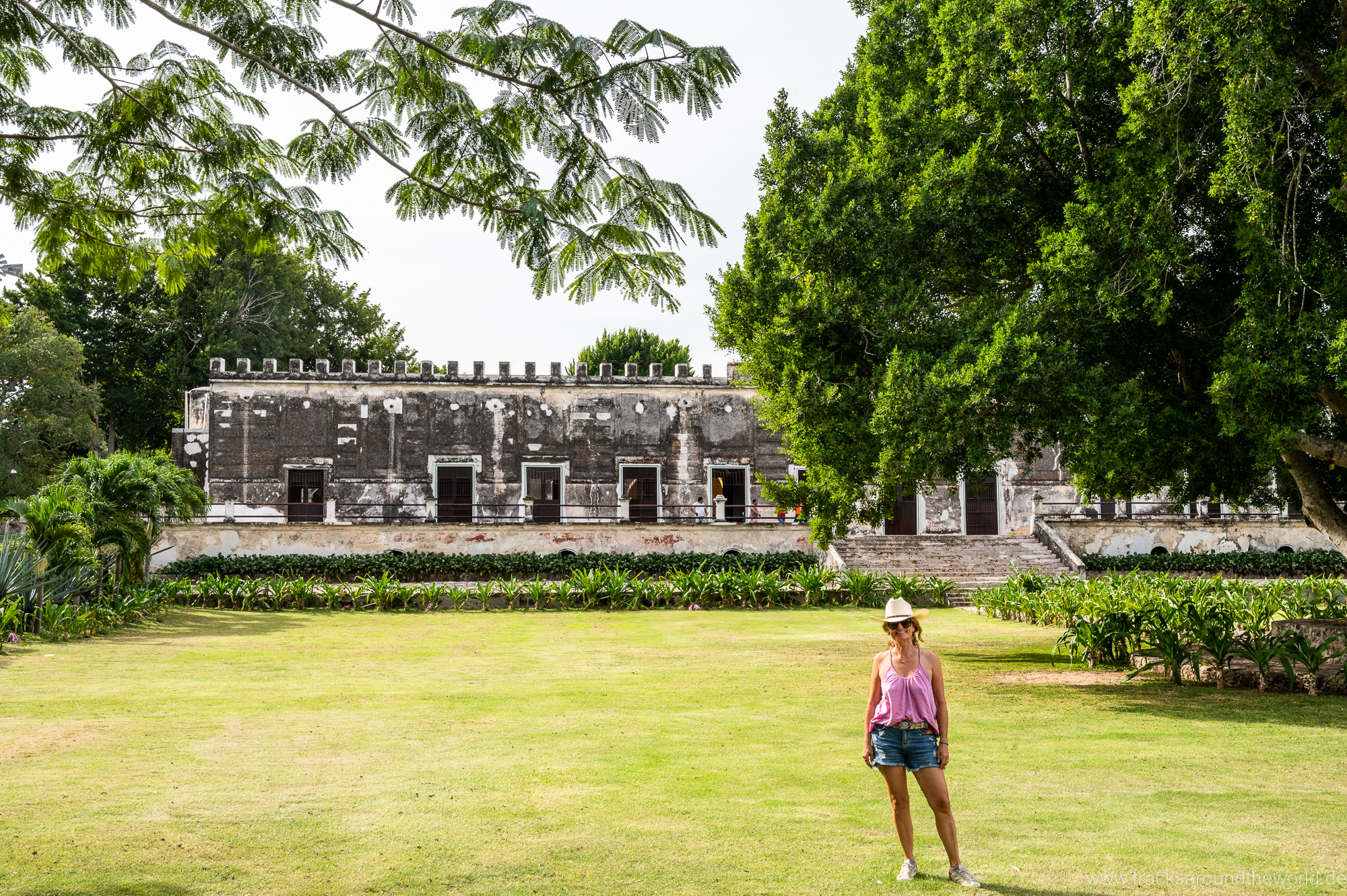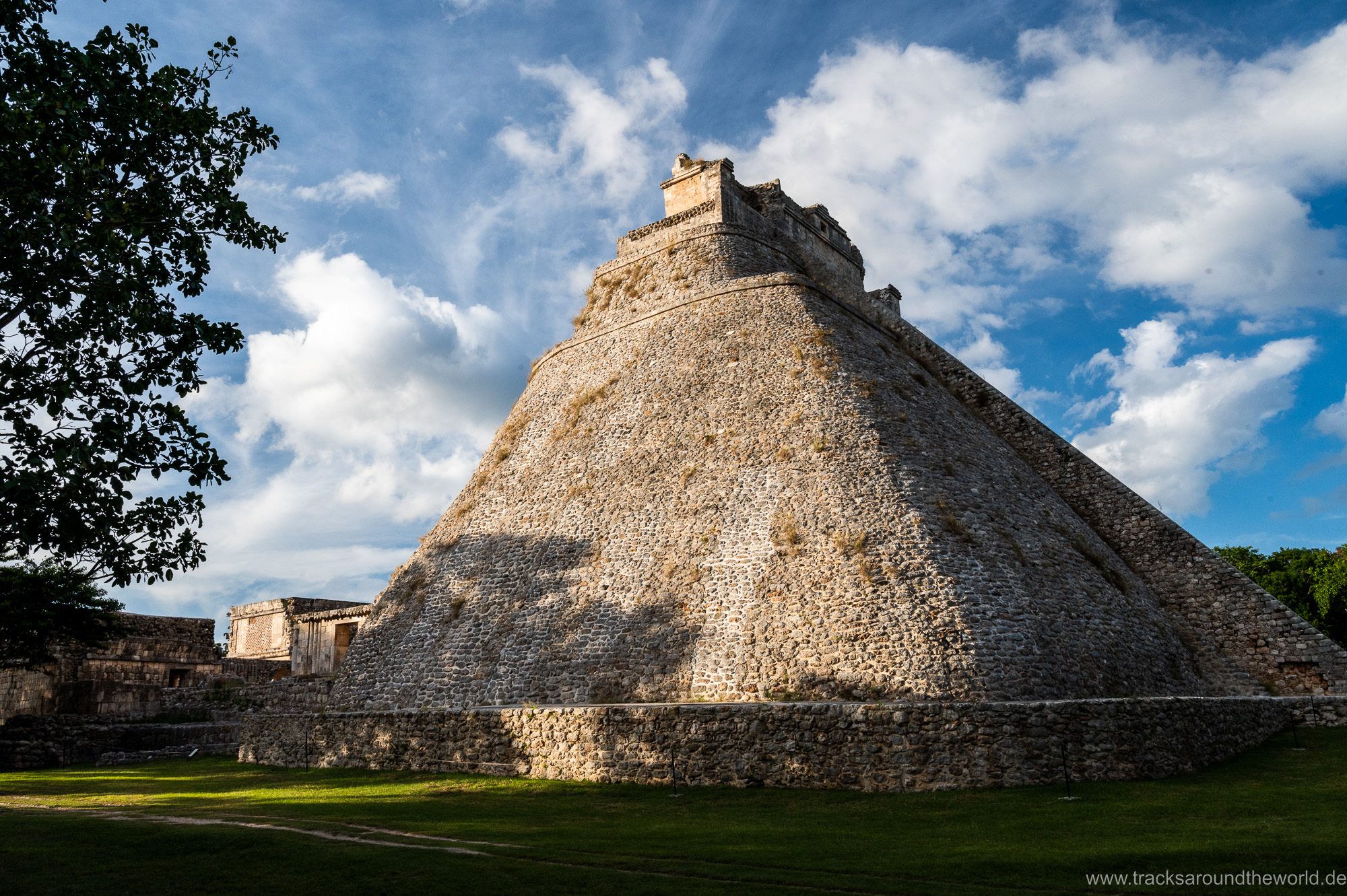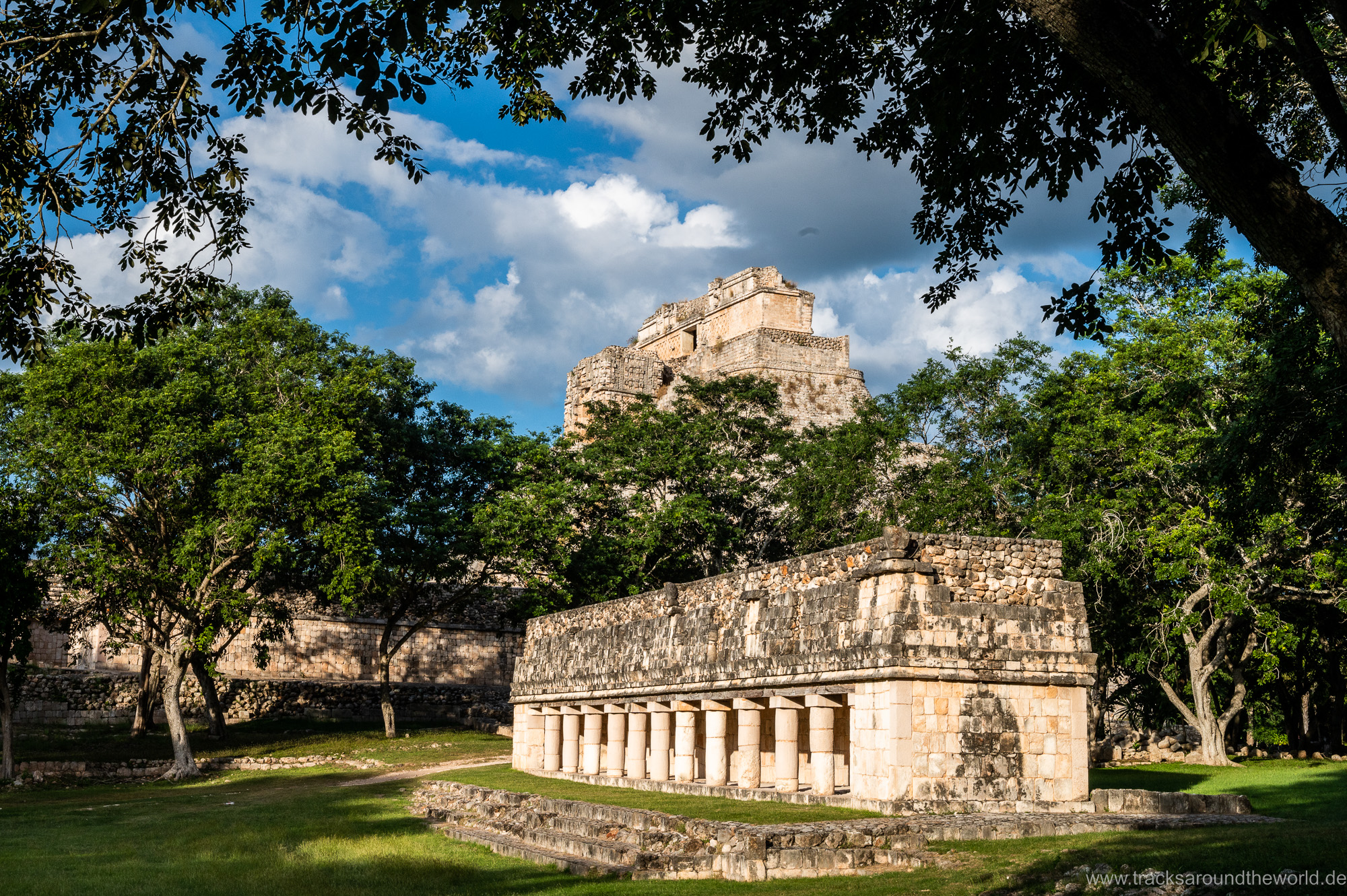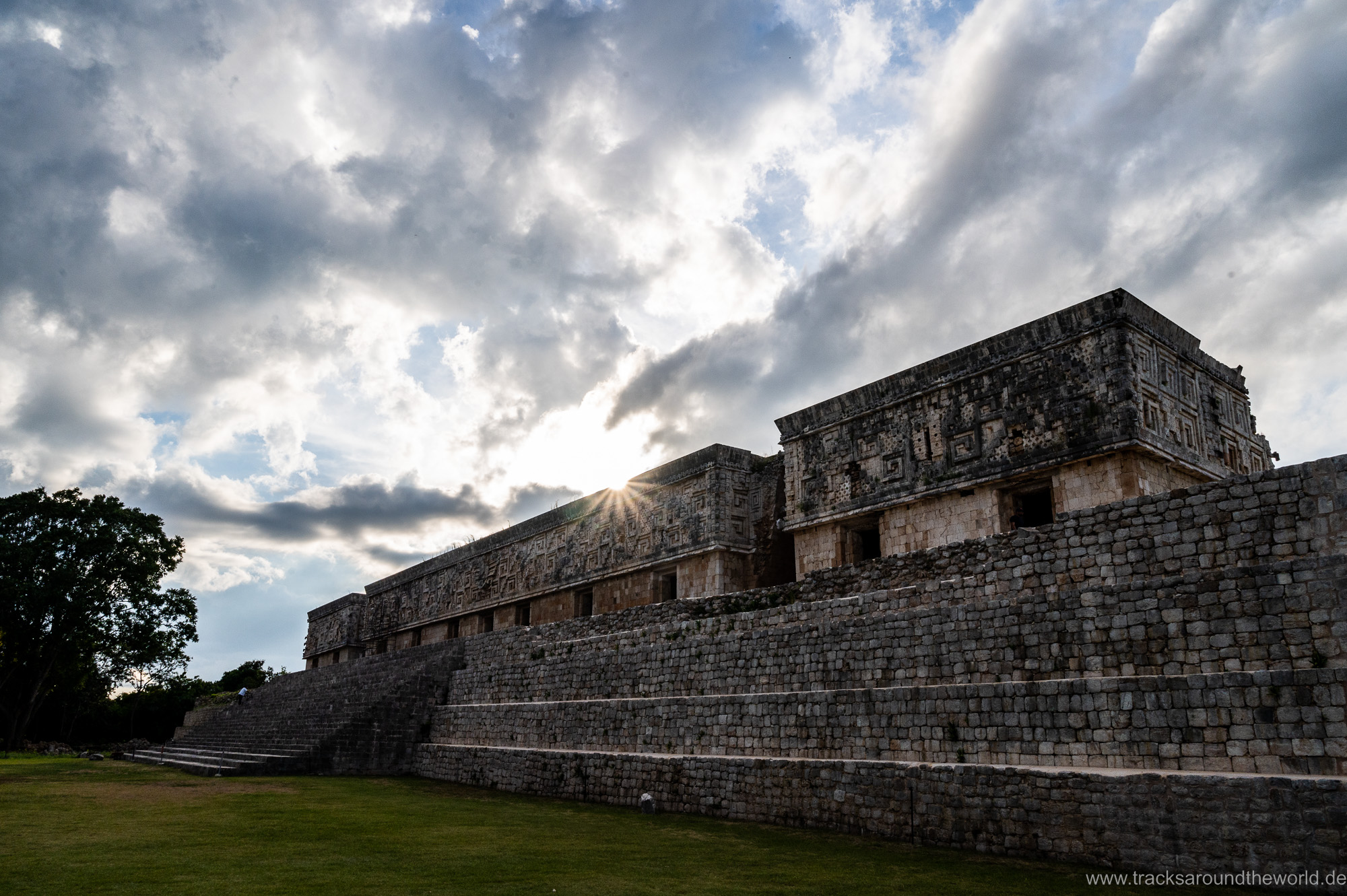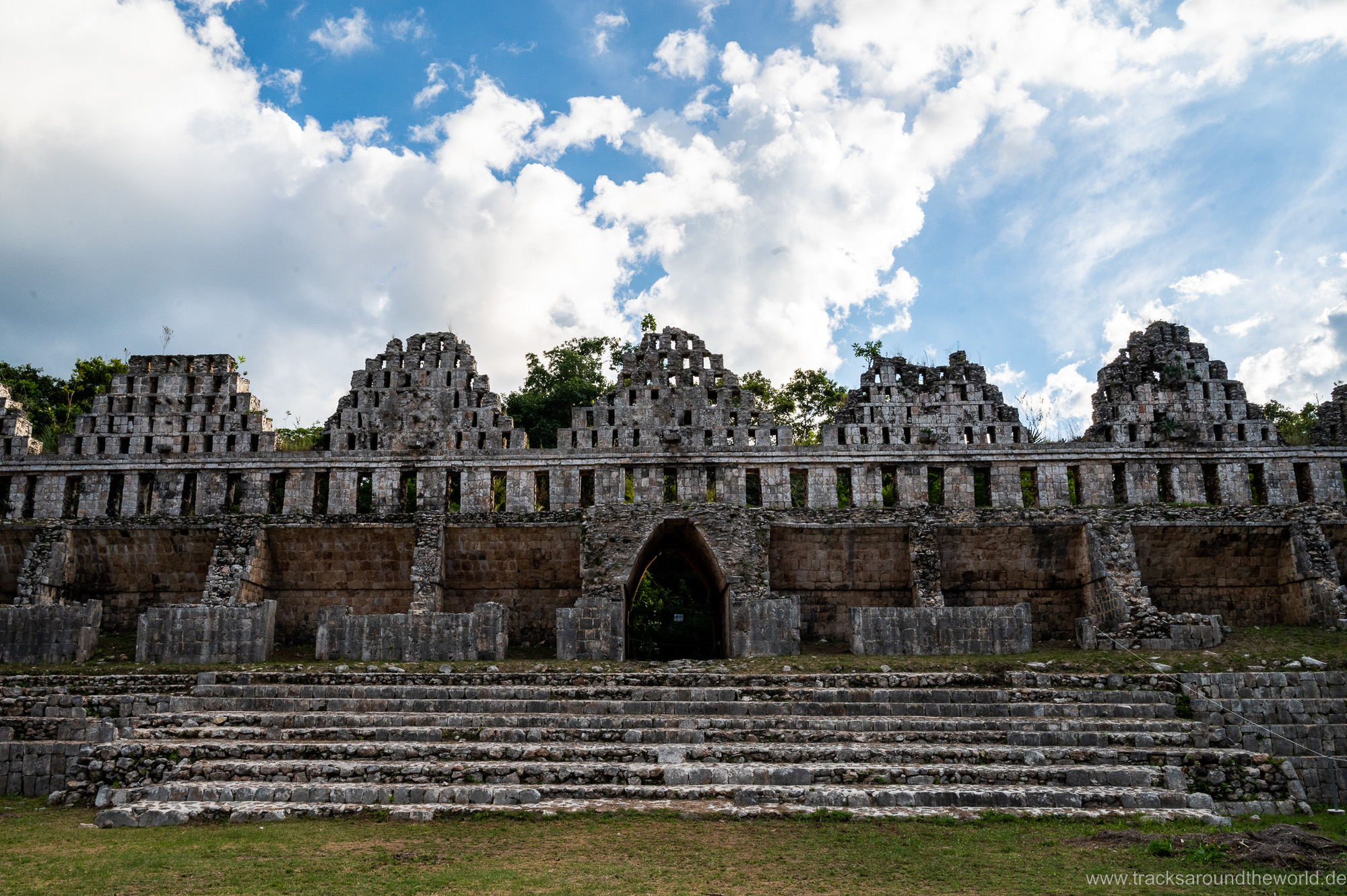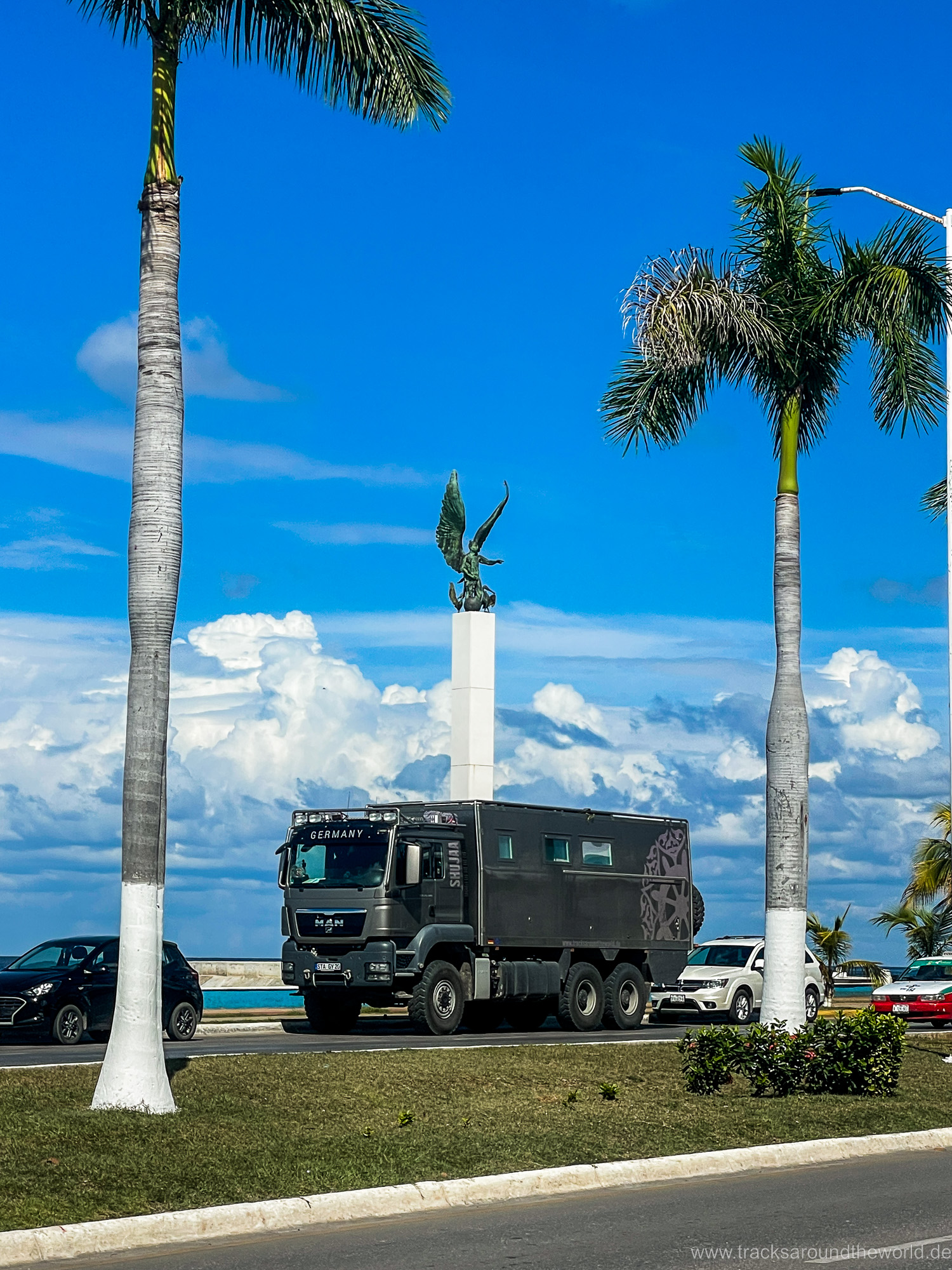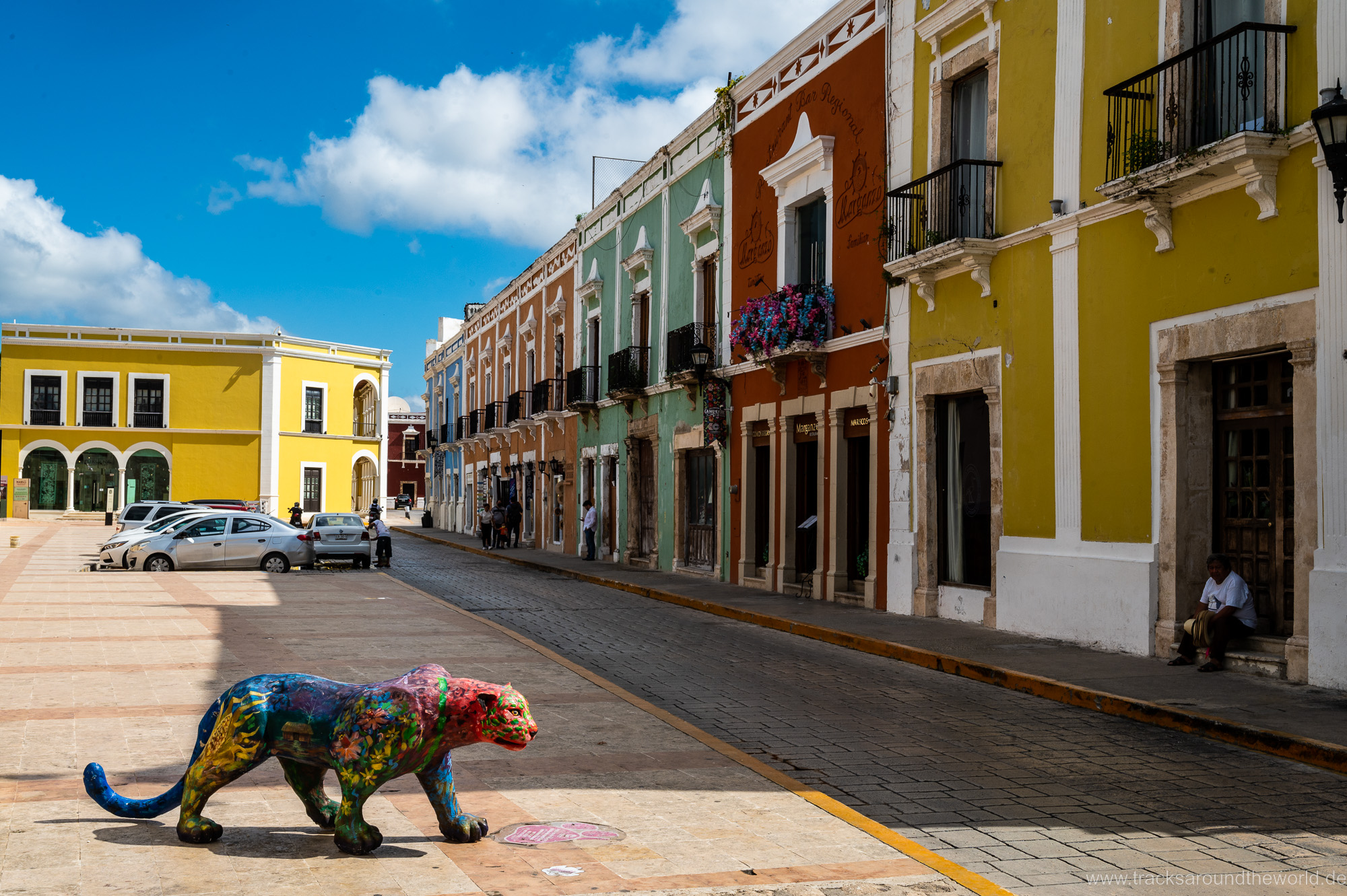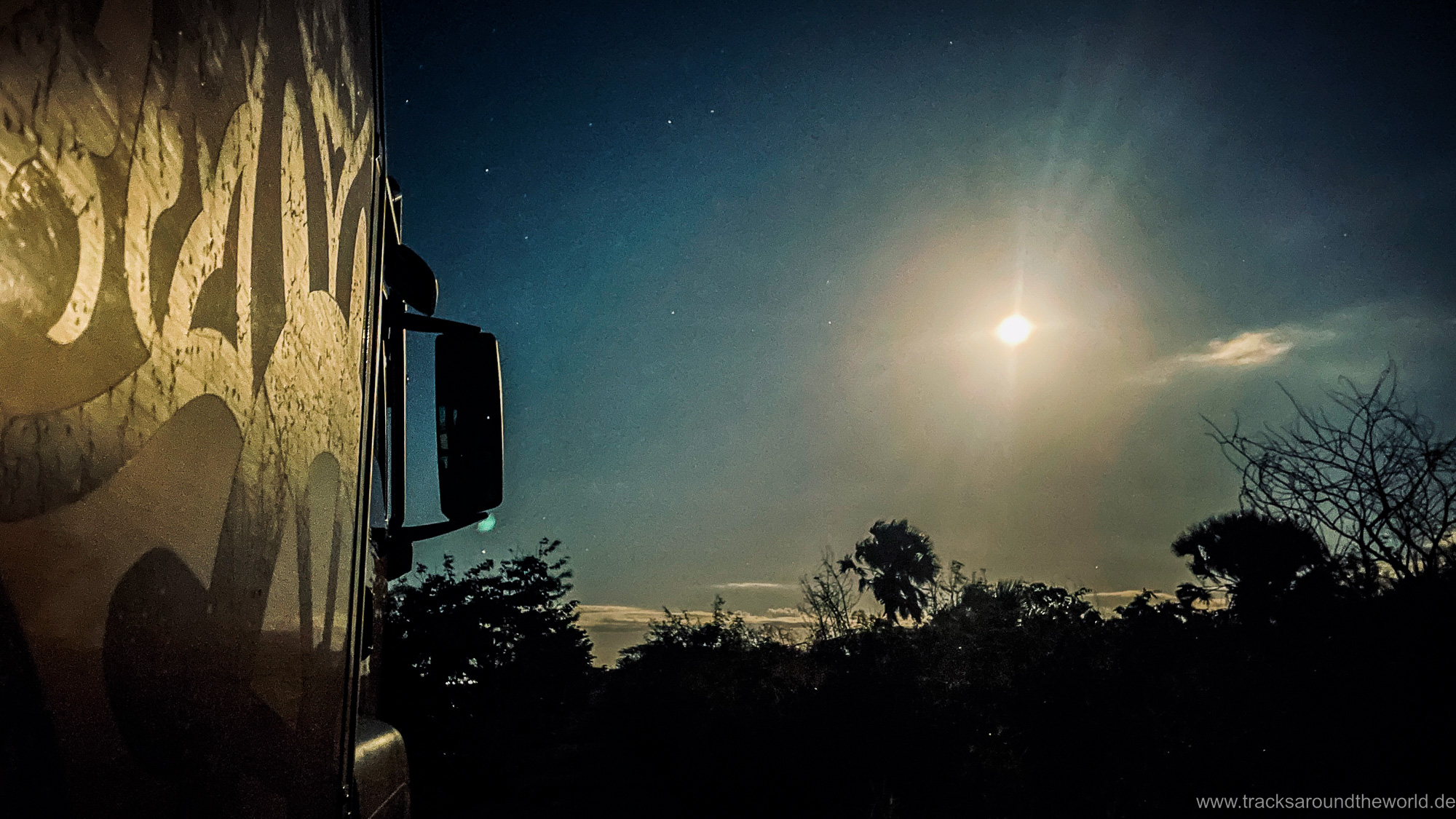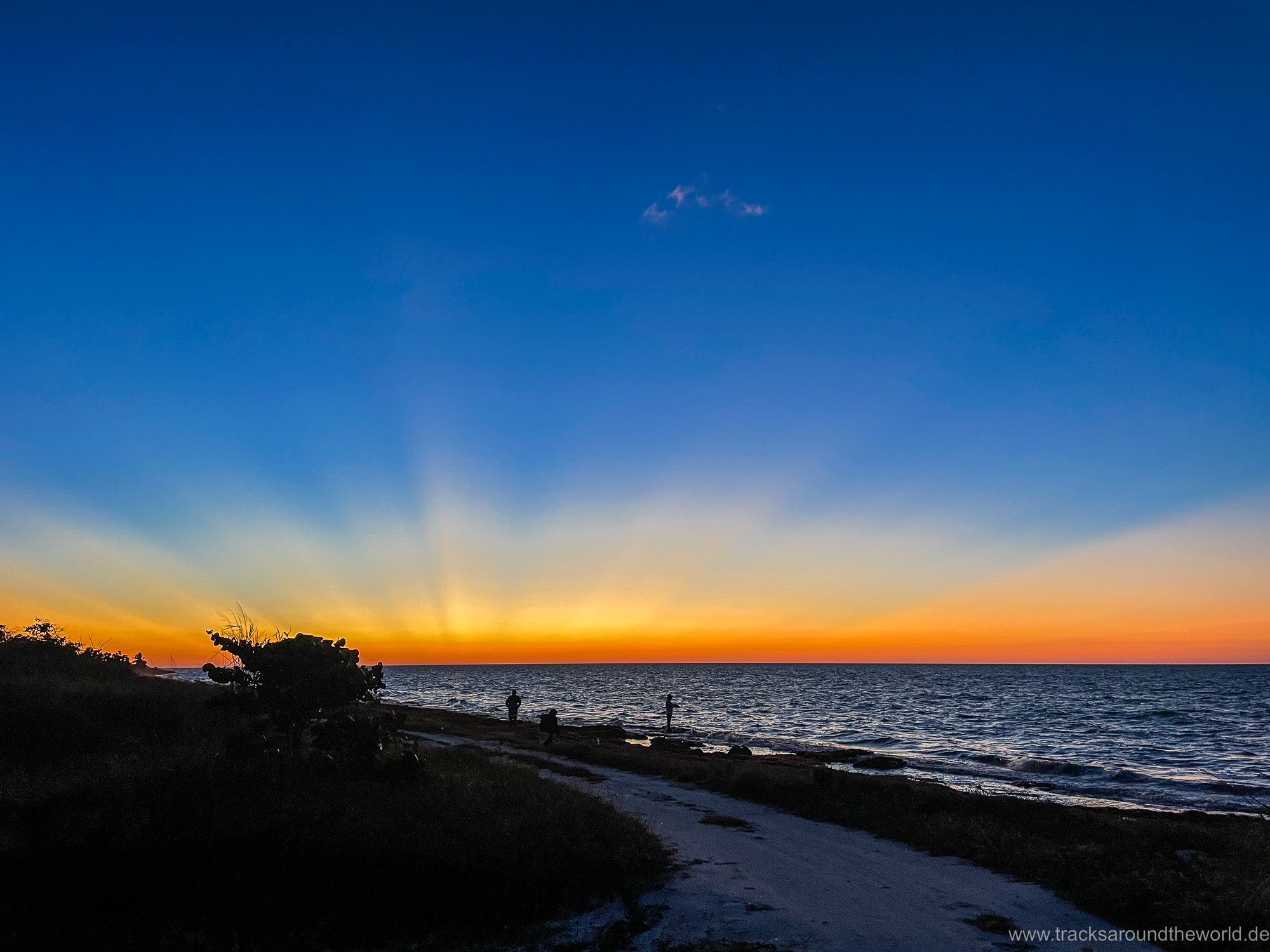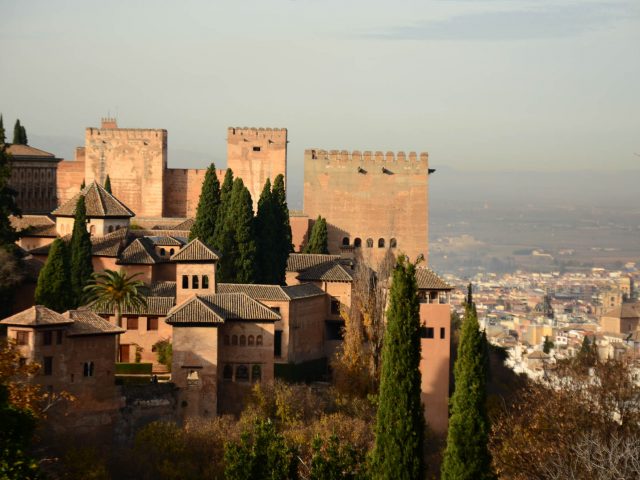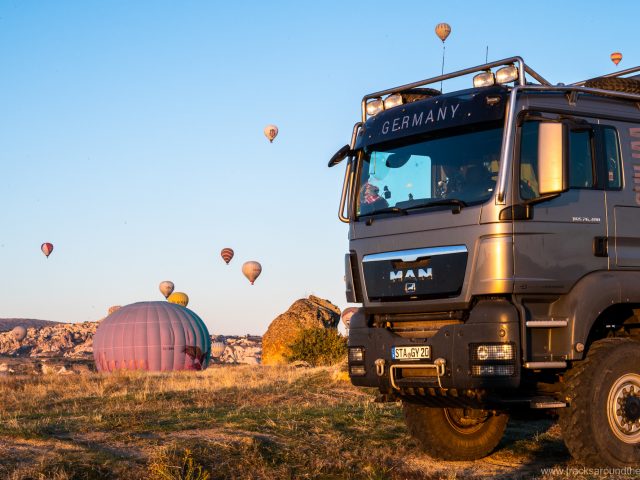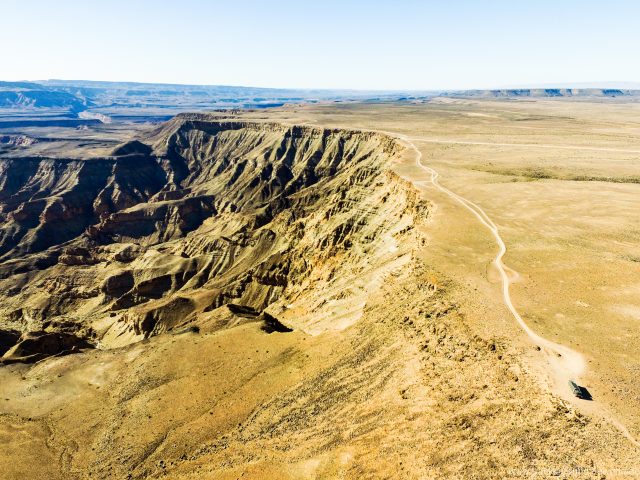From the deep jungle of the Mayan ruins of Calakmul we drive to the beaches on the untouristy north/west side of the Yucatan Peninsula. Here, surprisingly, the cities such as the tidy and wealthy Campeche (the capital of the province of the same name) or the lively Merida (the capital of the Yucatan province) impress us more than the beaches themselves. There is a reason why the main tourism on the Yucatan Peninsula is on the east coast and not on the west and north coast: only there the water is Caribbean turquoise-blue, otherwise it is more green-brown due to the partly dense mangrove vegetation. As we know, traveling also leads to gaining knowledge… and so we don’t enjoy turquoise-blue water as we had hoped, but we do enjoy great secluded parking spaces directly on the beach near small, original villages like Sisal, Playa Chuburna or El Cuyo. Uxmal, another very interesting Mayan site, is also on the program. The weather is changing rapidly: not only in terms of sun and rain, but also in terms of temperature and humidity. One day we are sweating like hell at over 30 degrees and 90% humidity, then we have a pleasant 26 degrees and only 60% humidity… a huge difference in terms of feeling good (especially with the way we travel!).
A welcome change on hot days is a detour to the so-called “cenotes”, which are very numerous on the Yucatan Peninsula and especially in the region south-east of Merida. Cenotes are karst caves with groundwater access, which are often only accessible from above via steep ladders due to the collapse of the cave ceiling. Some of them are beautifully lit, some of them shimmer turquoise-blue: but they always offer a great and refreshing bathing experience in crystal clear water.
From the cenotes around Merida we then head to the north-east coast of Yucatan and – for the first time on our entire North/Central America trip – we leave Shujaa alone for one night. We take the ferry to the small island of Holbox, where we booked a room in a small boutique hotel a little away from the hustle and bustle of the city: the hotel and island are indeed very nice, even if they are no longer an “insider tip”, but after the heavy rains of the last weeks the streets have been completely flooded hence clearly limiting our range of activities outside of the beach area. It is impossible to explore the island by bike or to walk to beaches on the other side of the island. So, we stay just one night. It was undoubtedly nice, even if it was a bit too touristy for our taste, but the comparison benchmark of standing on lonely beach spots with Shujaa is quite high… and we always weigh that up 😉.
We find the dream pitch for us and Shujaa – completely surprisingly – just a few km north of the tourist metropolis of Cancún on the Isla Blanca peninsula. The wide hotel avenue suddenly turns into a pothole track, then it becomes really deep sand, so we have to deflate our tires and then we are standing there: white and very fine sand, palm trees and finally turquoise blue, open sea on one side and on the other side of the peninsula (that is only a few meters wide) a shallow lagoon. Of course, we stay here for a few days and the temperatures and humidity are now very pleasant. In the distance we can see the tiny 20 km long hotel strip in Cancún: what different worlds!
Unfortunately, that was the last highlight for us in Mexico: the rest of the extremely touristy east coast of Yucatan – also called Costa Maya – disappoints us and once again made it clear that tourist areas are simply not good overlander destinations: a negative influence on the price level and the friendliness of the otherwise extremely friendly and relaxed Mexicans as well as the difficulty of finding a nice and quiet overnight place. But even as non-overlanders, we certainly would not travel to Cancún – these hotel castles, even if they have 5 stars, are not our world – it’s a pity for the absolutely fantastic beaches. Unfortunately, the beach town of Playa del Carmen falls into the same category and the day trip to the island of Cozumel doesn’t provide the great snorkeling experiences as expected. The entire coast is plastered with beach clubs and where we finally have free beach access, the underwater experience is rather sobering. Few fish, hardly any coral, although crystal clear water. But maybe we’ve just been unlucky so far. Tulum does have beautiful Mayan ruins right by the sea, but the place itself is horrible and the planned detour to the nature reserve down to Punta Allen, located on a headland, fails due to the height of Shujaa and the extremely bushy vegetation with many low-hanging branches.
Our last destination before leaving Mexico – the turquoise blue Laguna Bacalar, a 70 km long inland lake known for its brilliant, crystal-clear water, unfortunately cannot stand up to our expectation and the many beautiful photos we have seen in advance… due to the lack of sunshine. So, after more than 2.5 months we are leaving Mexico and looking forward to new experiences in the small state of Belize. Maybe we will be able to snorkel or even dive successfully on the second largest reef in the world from there.


